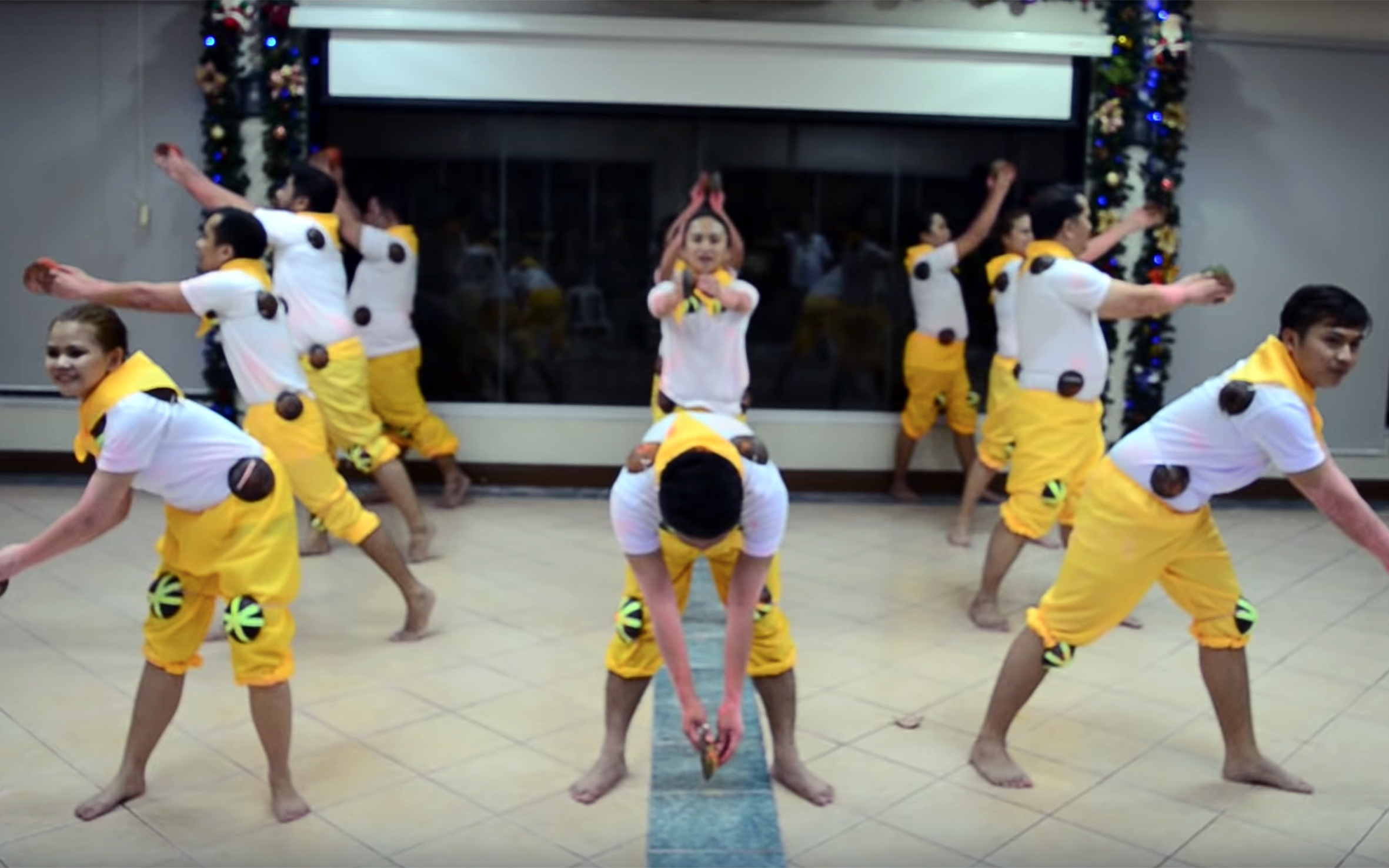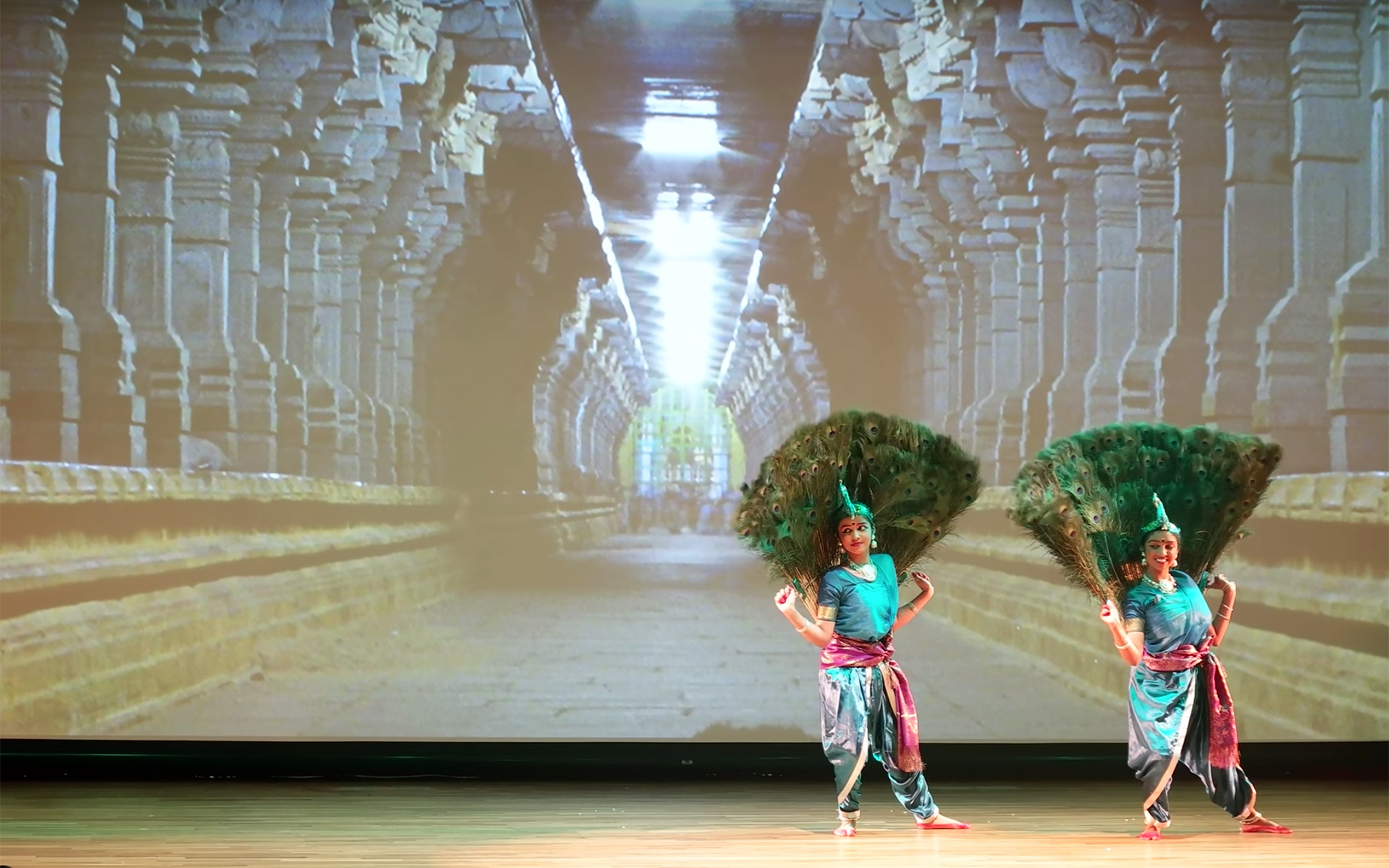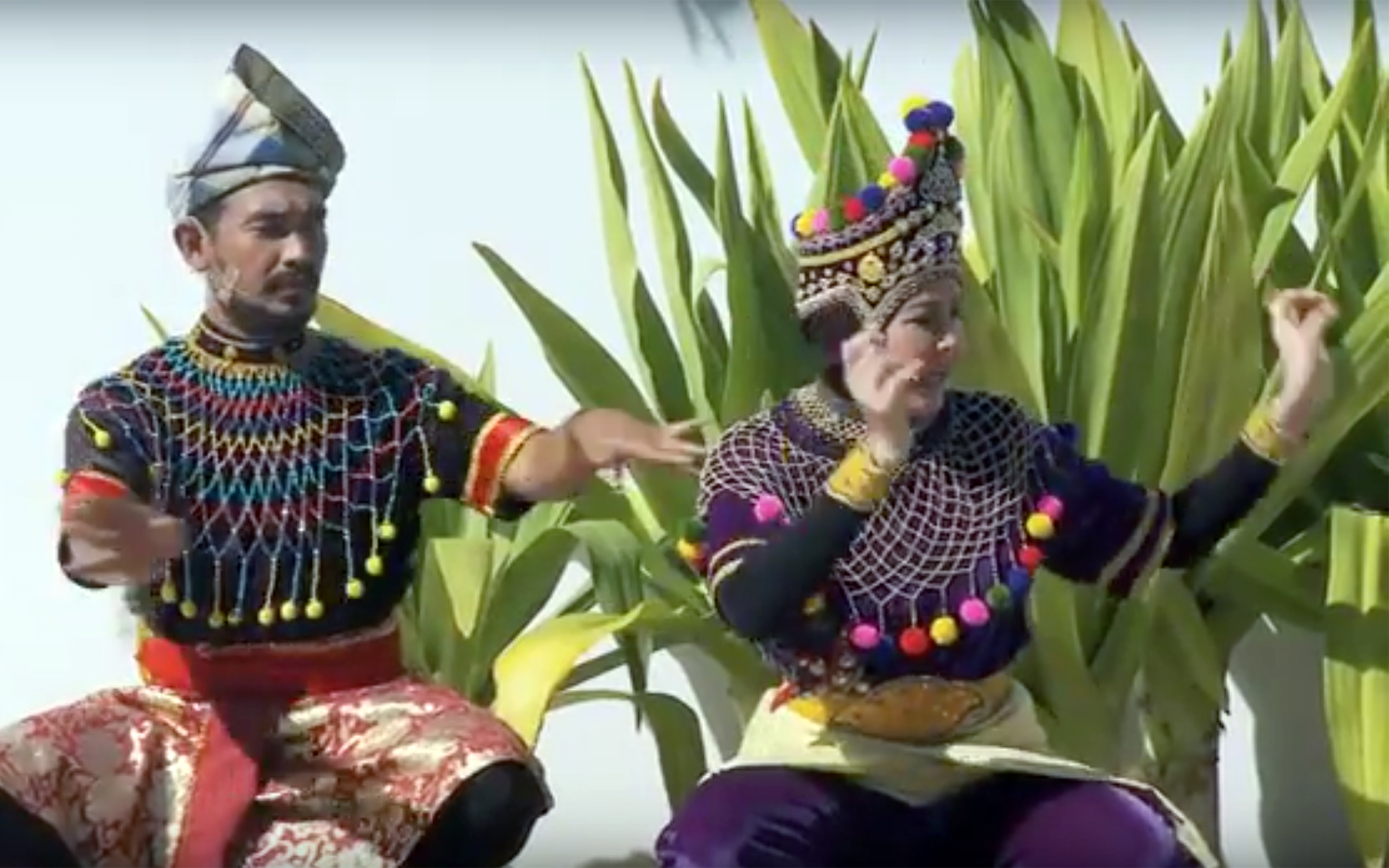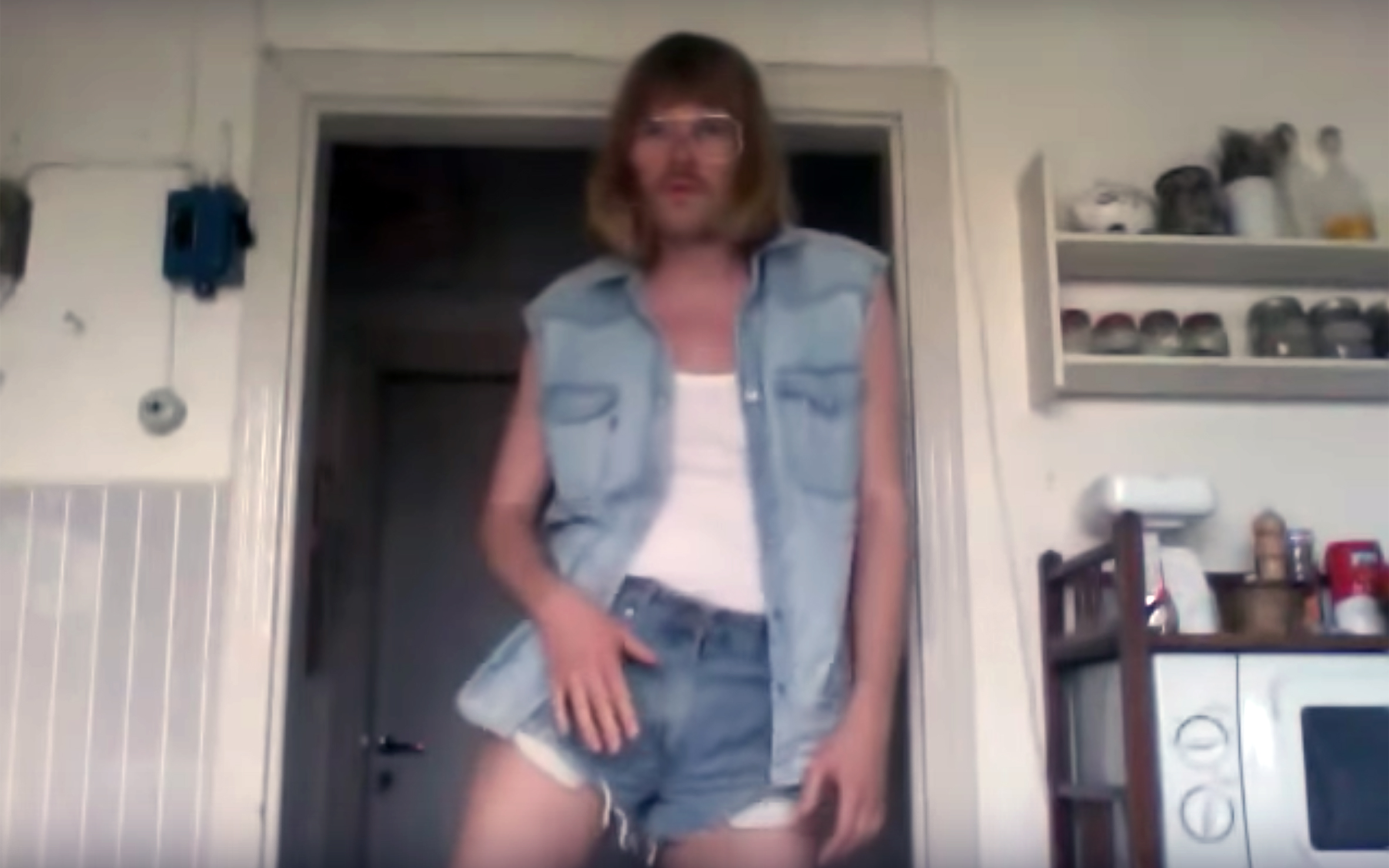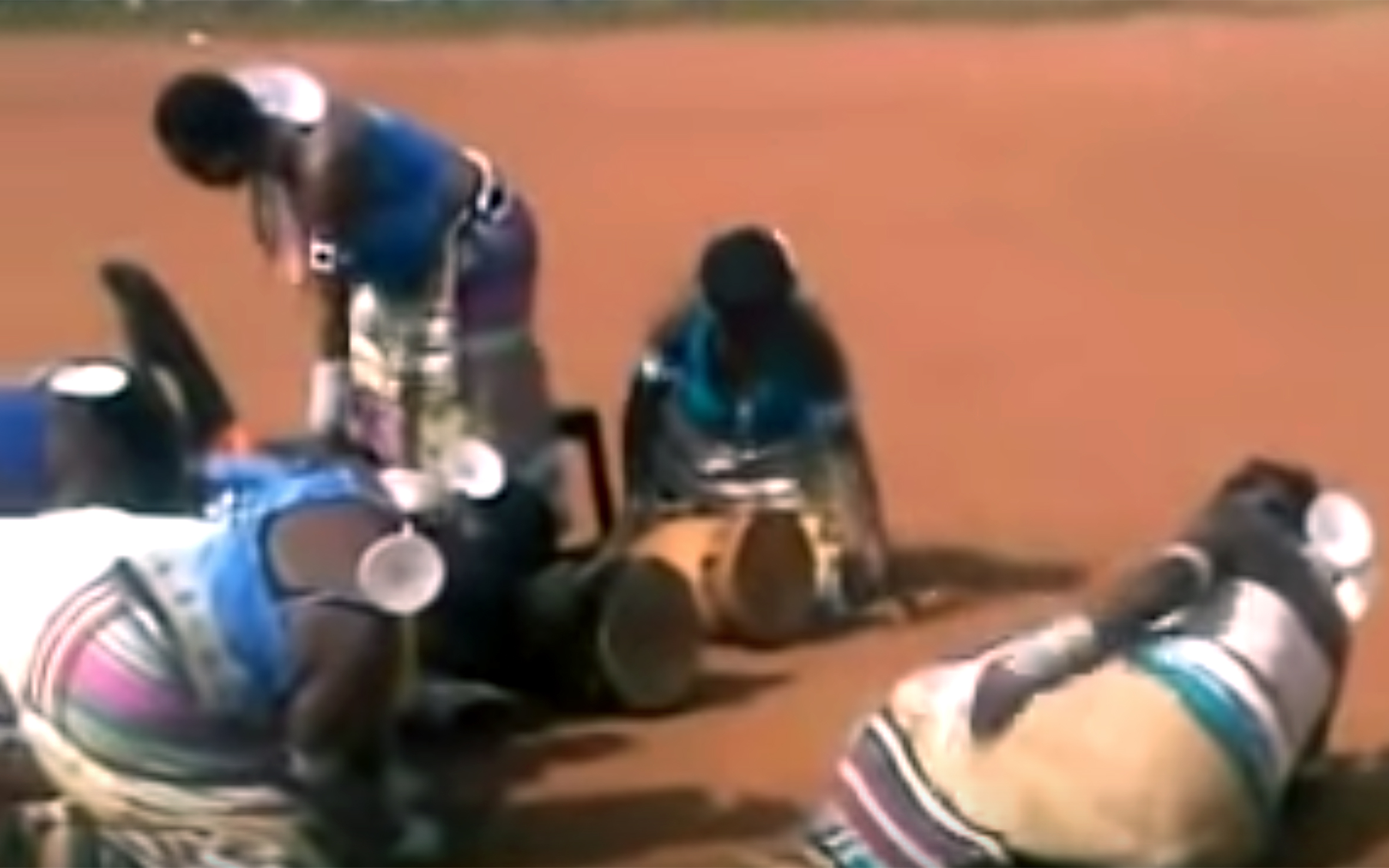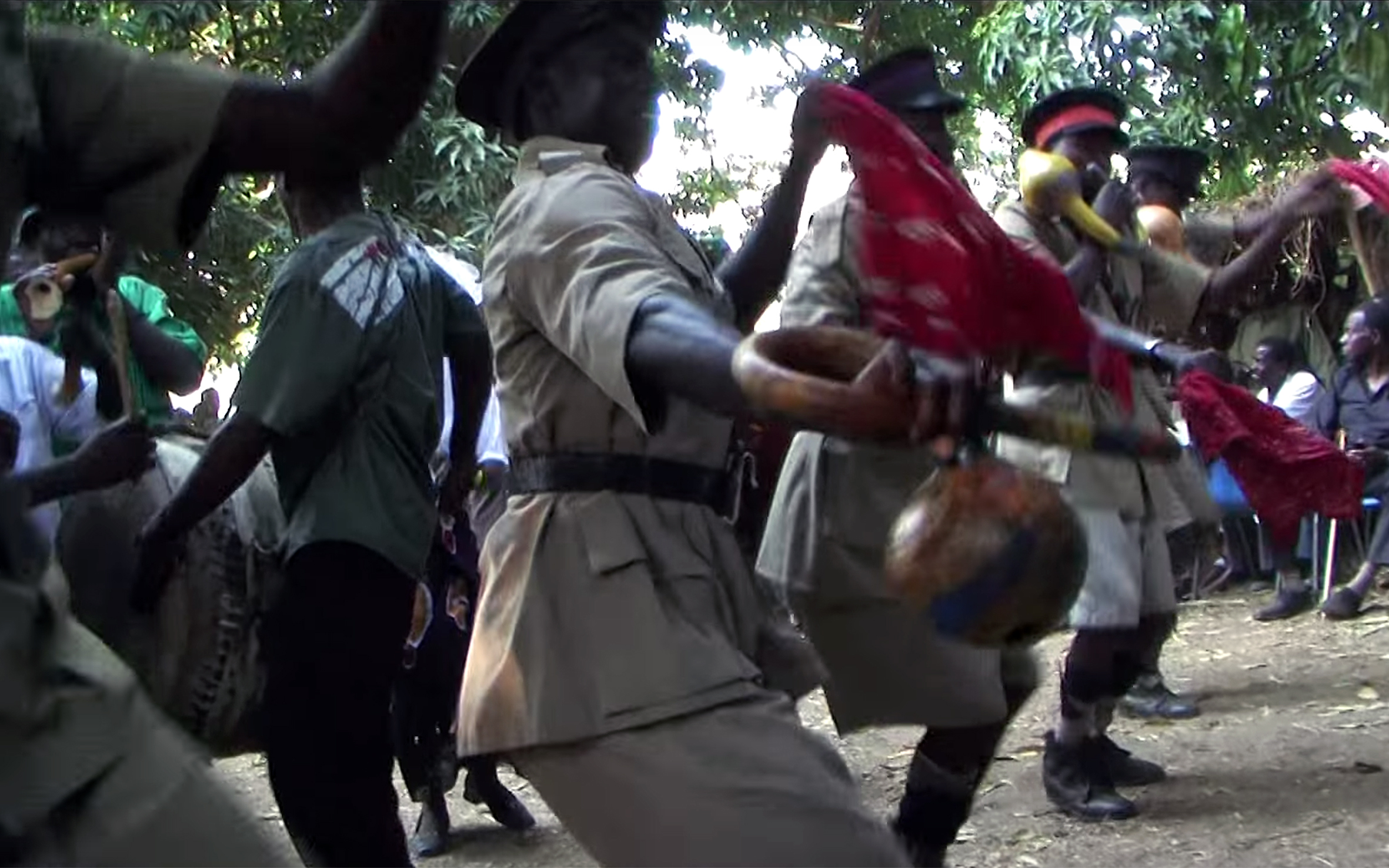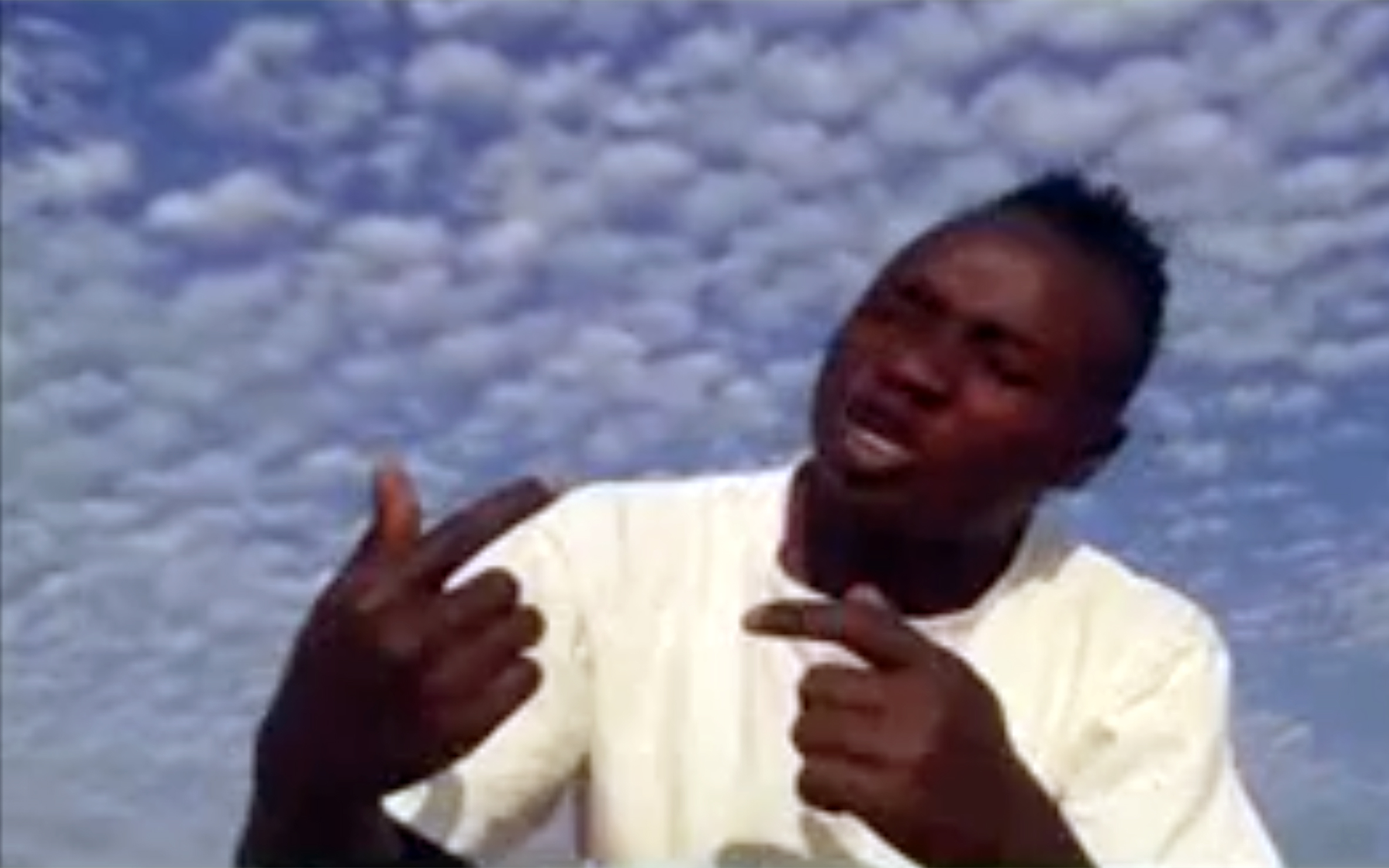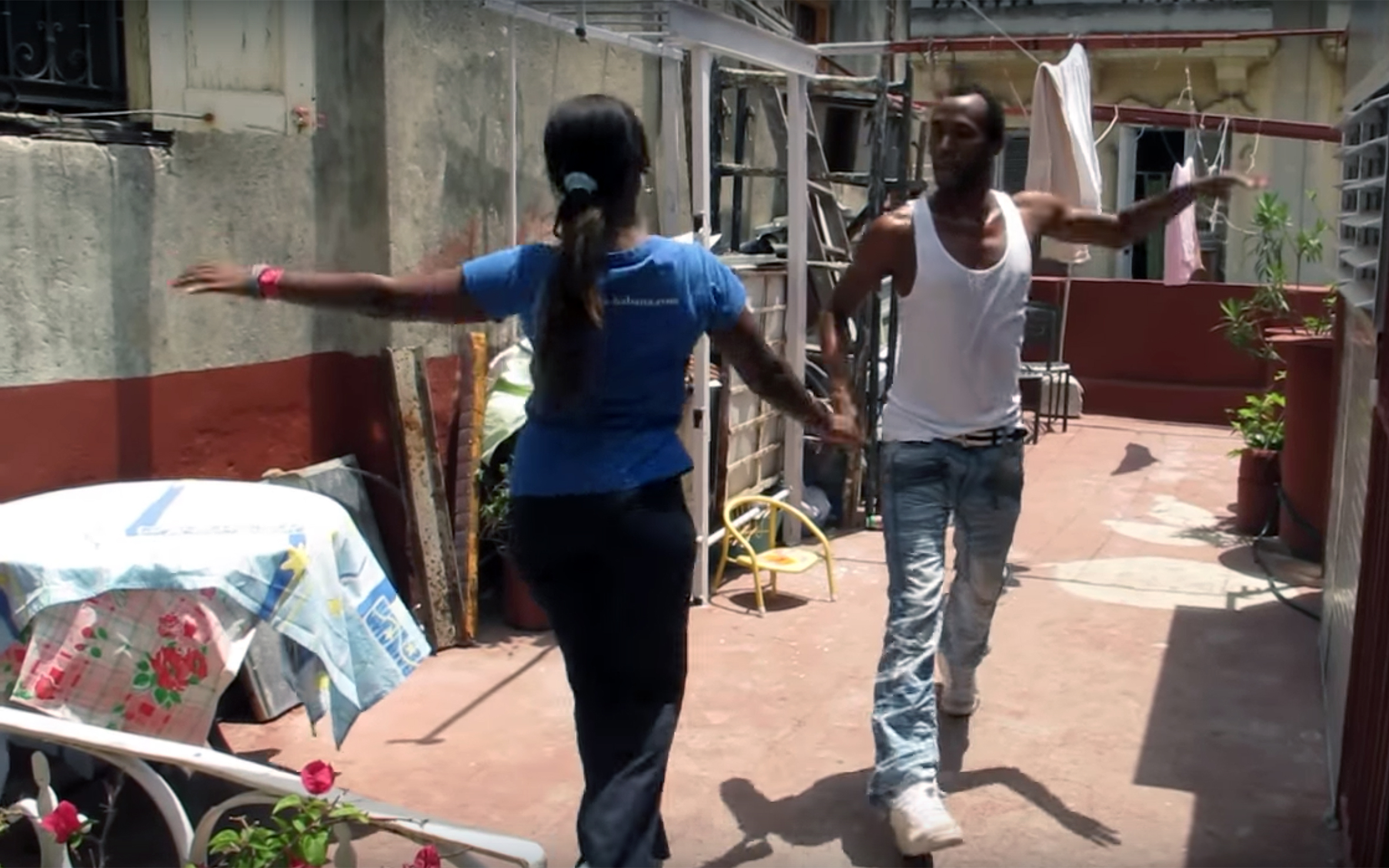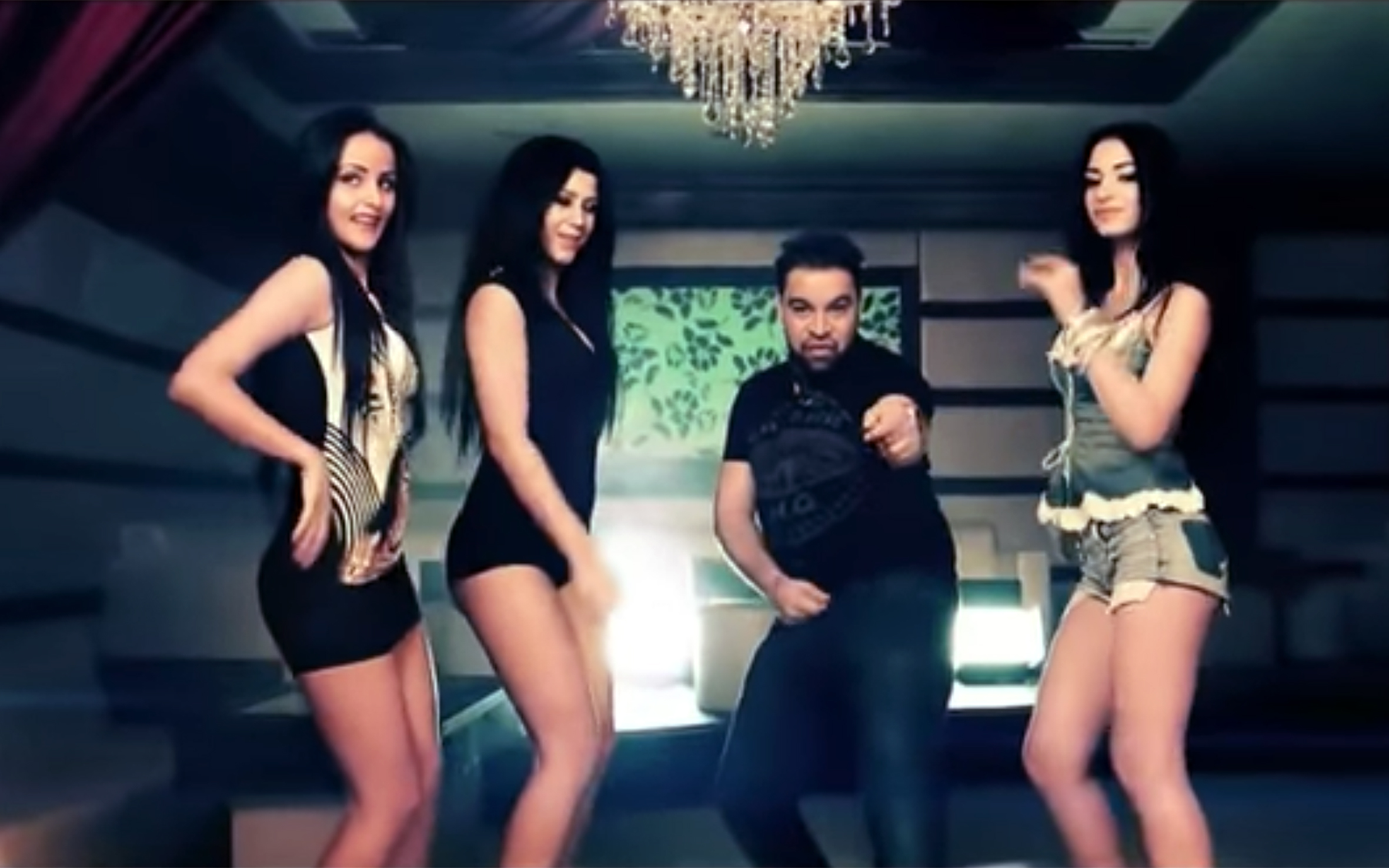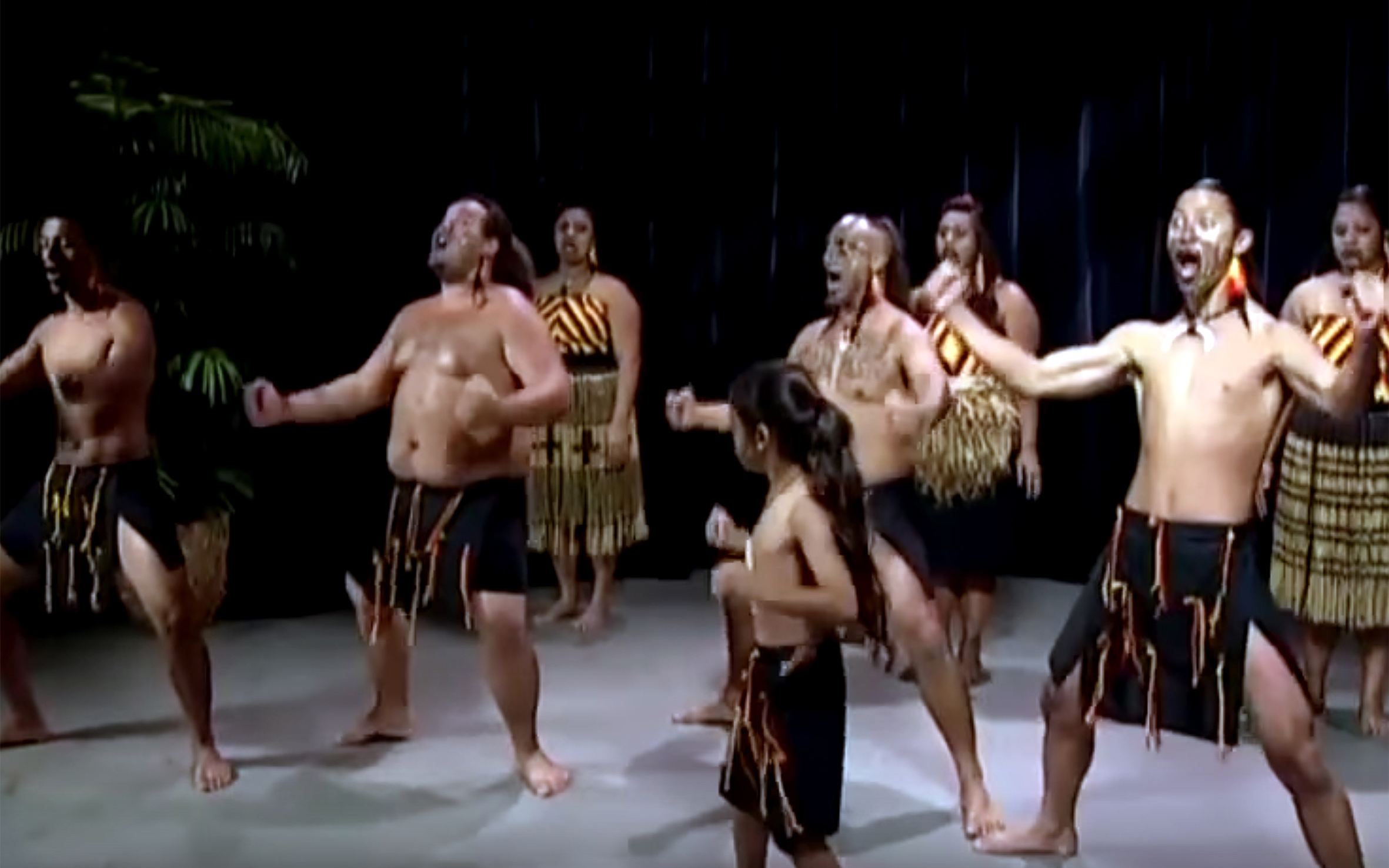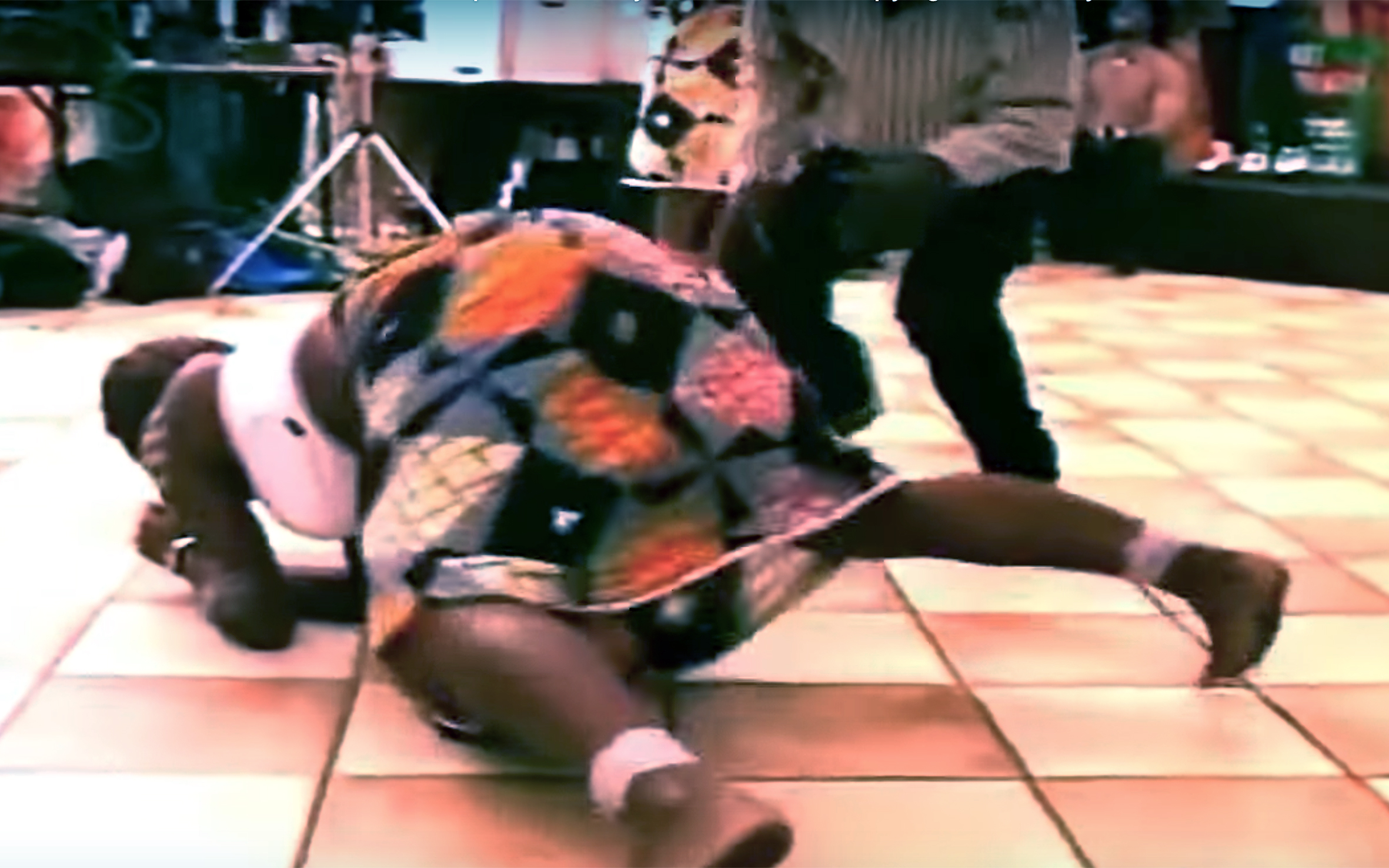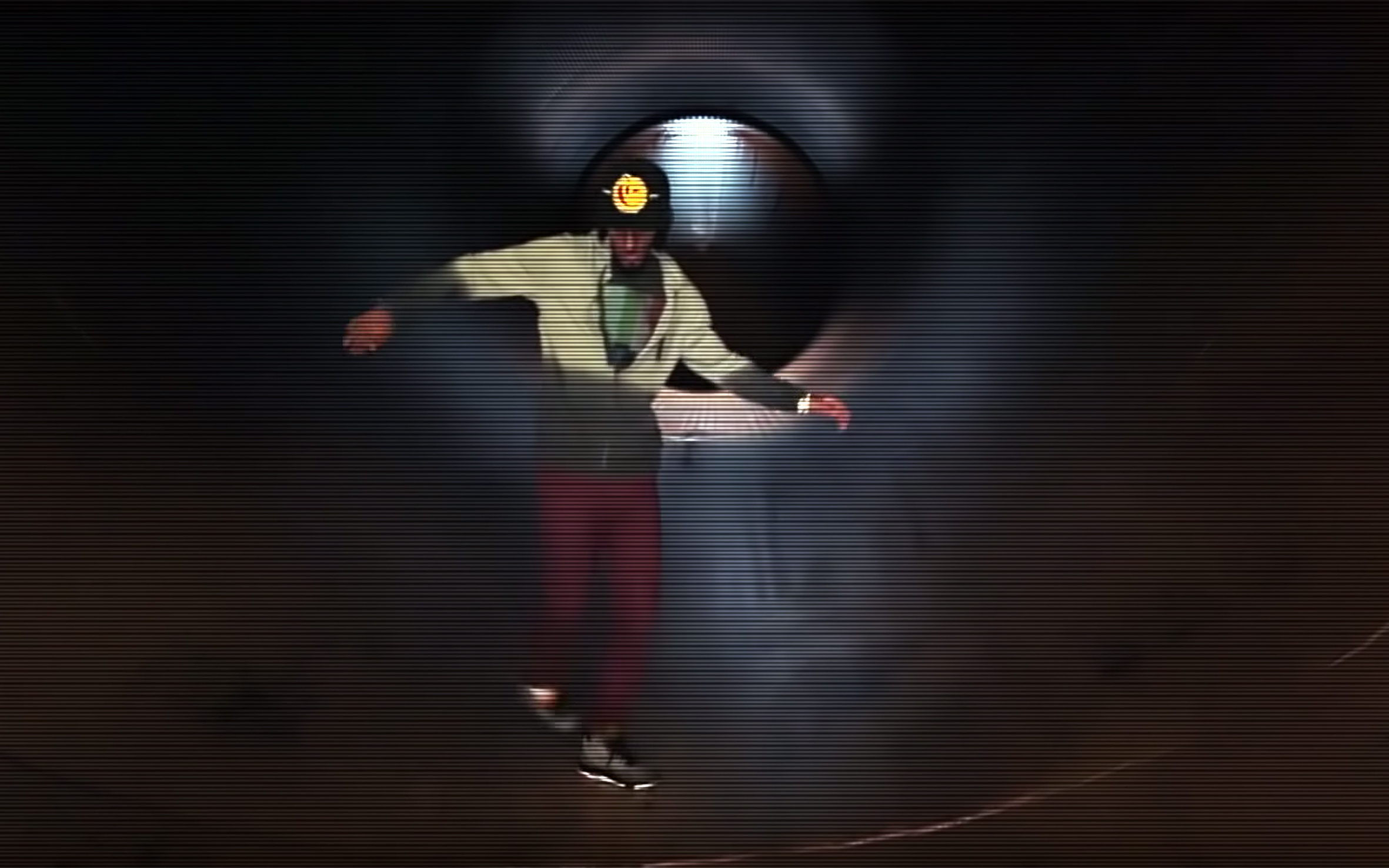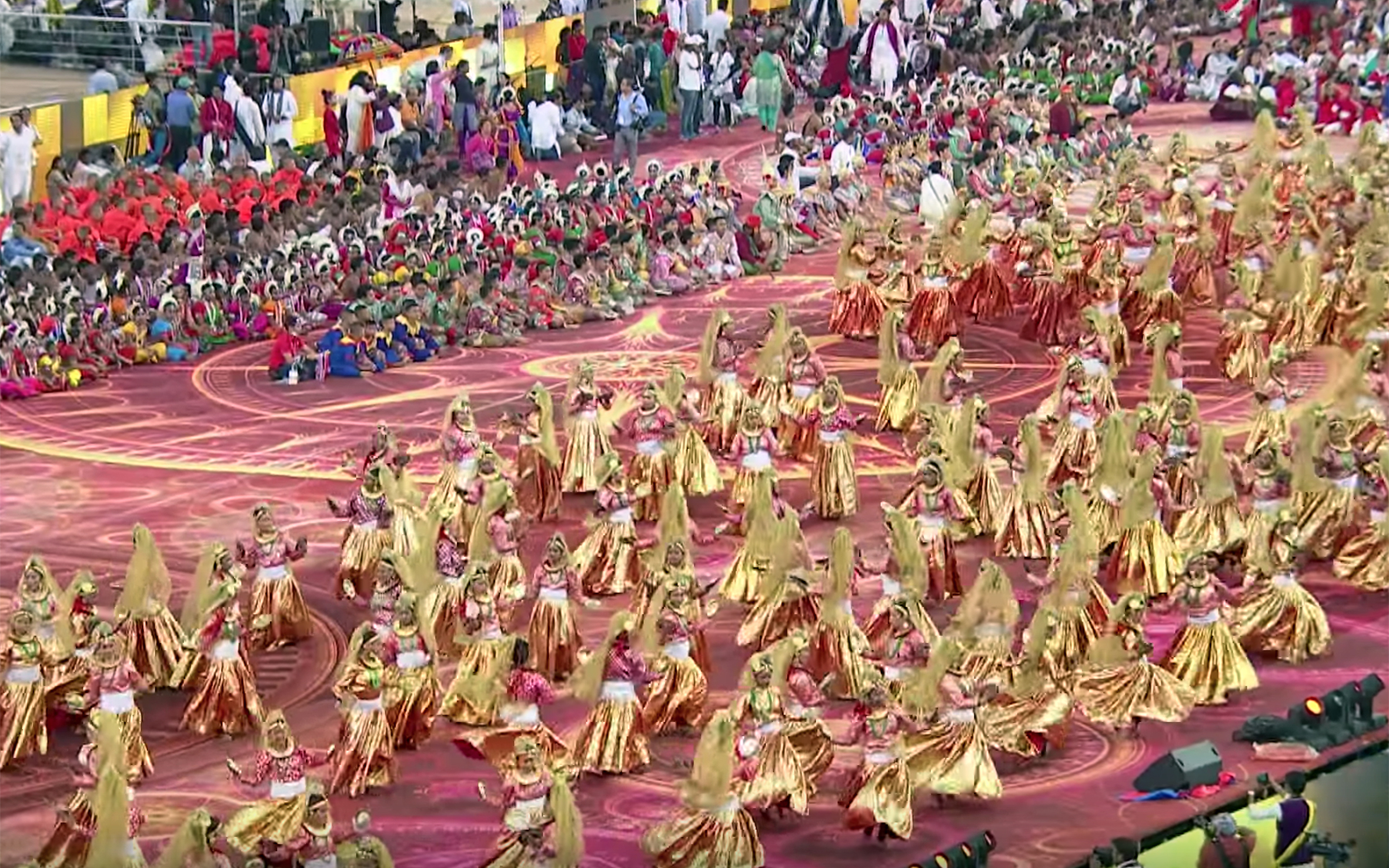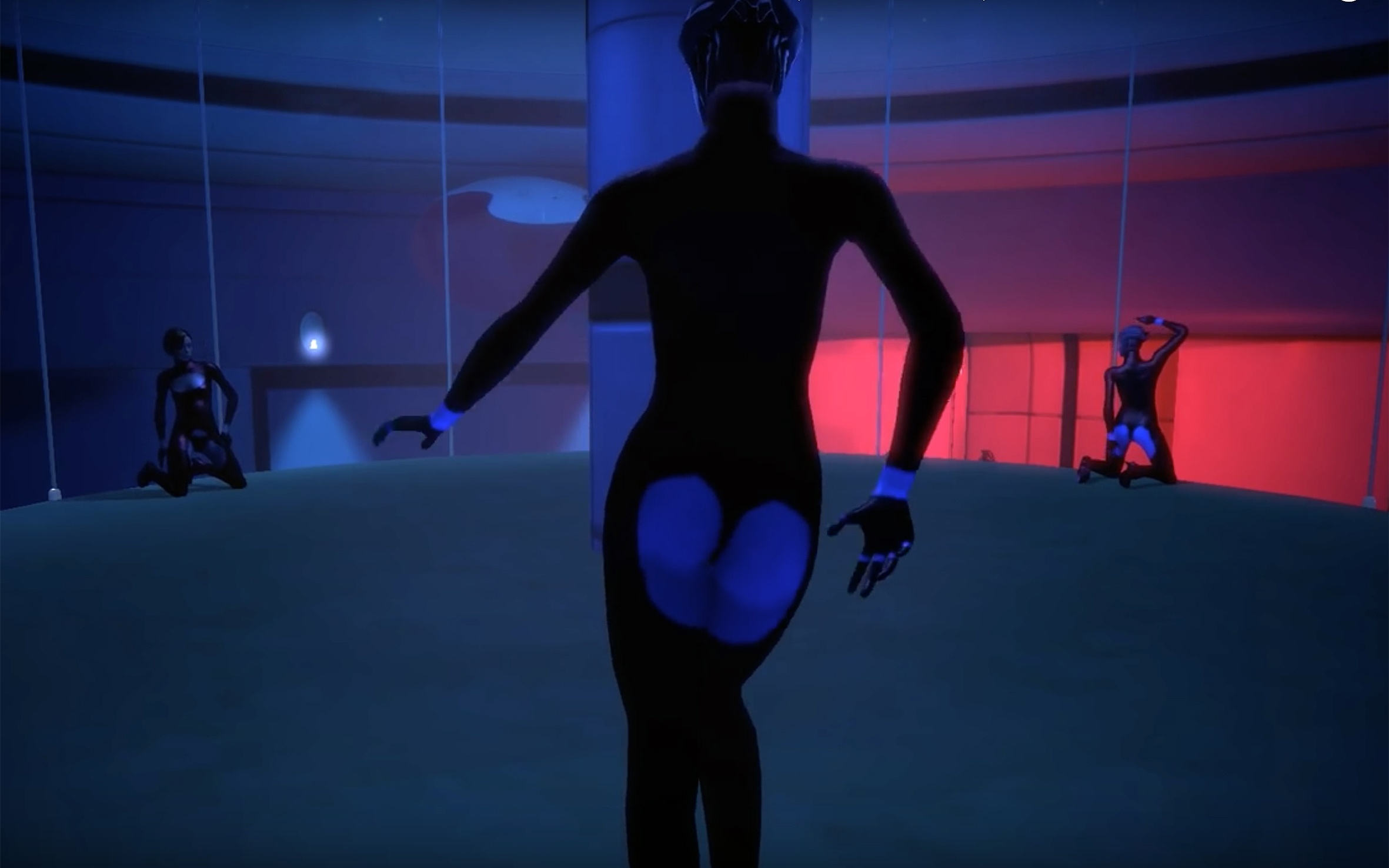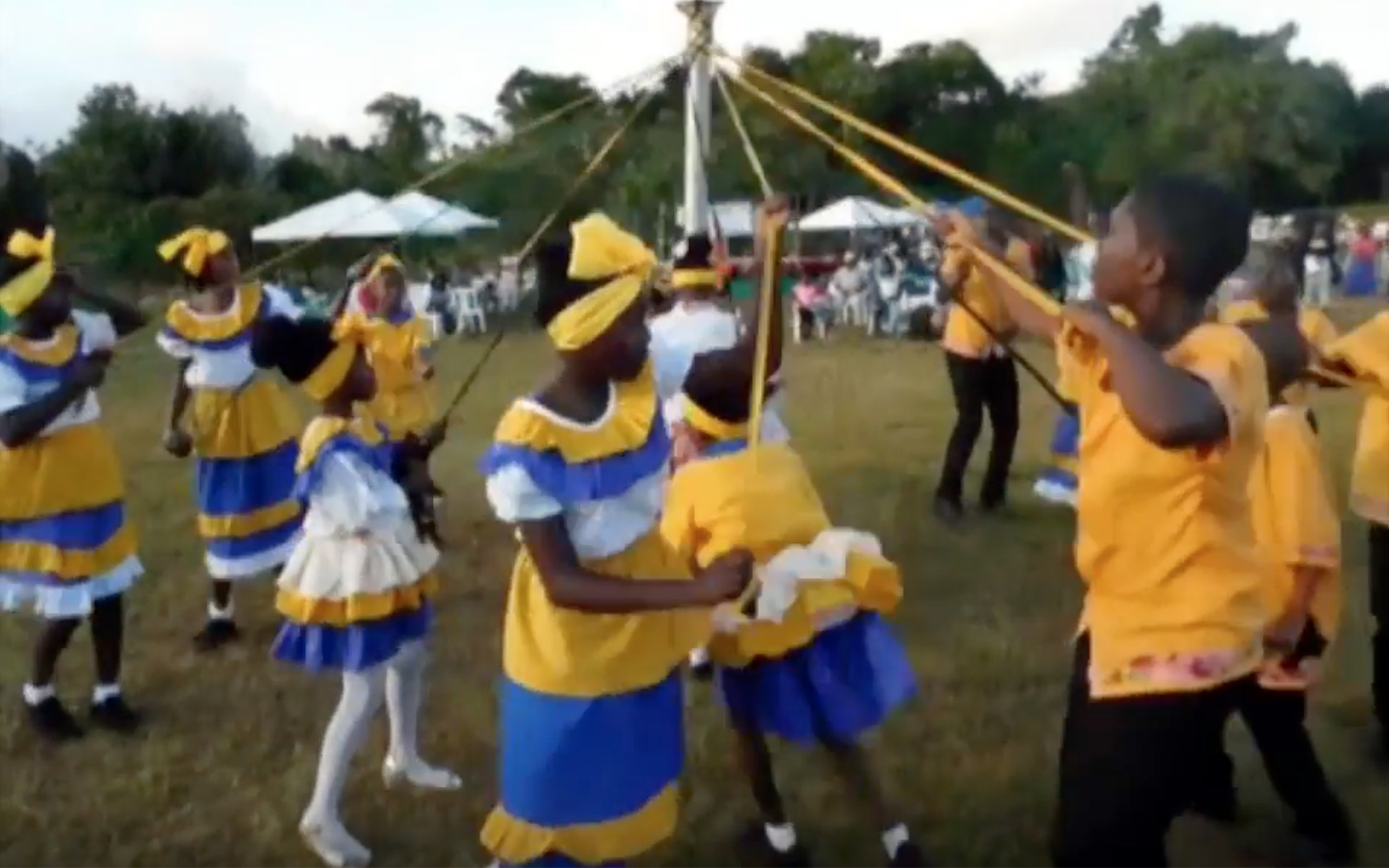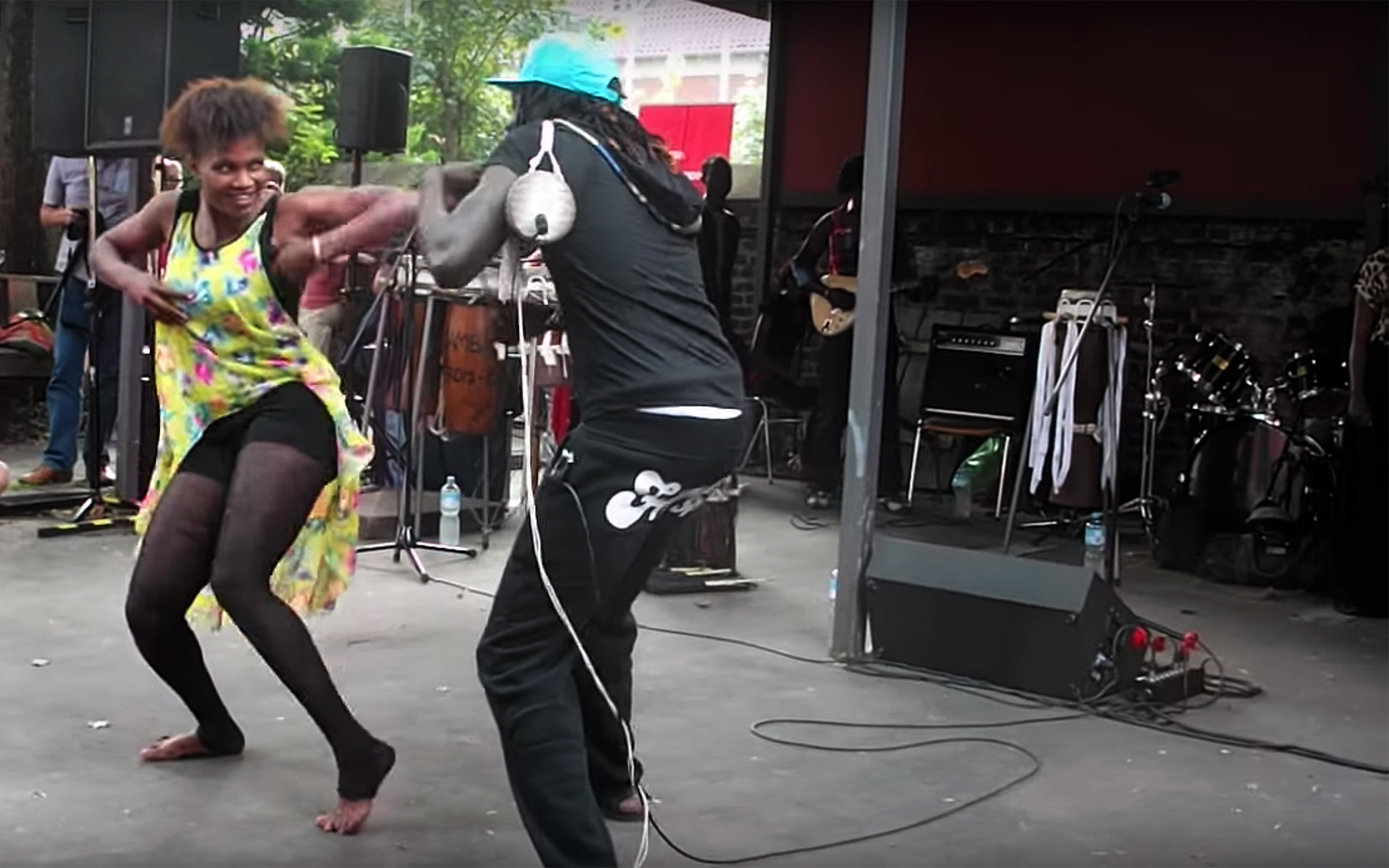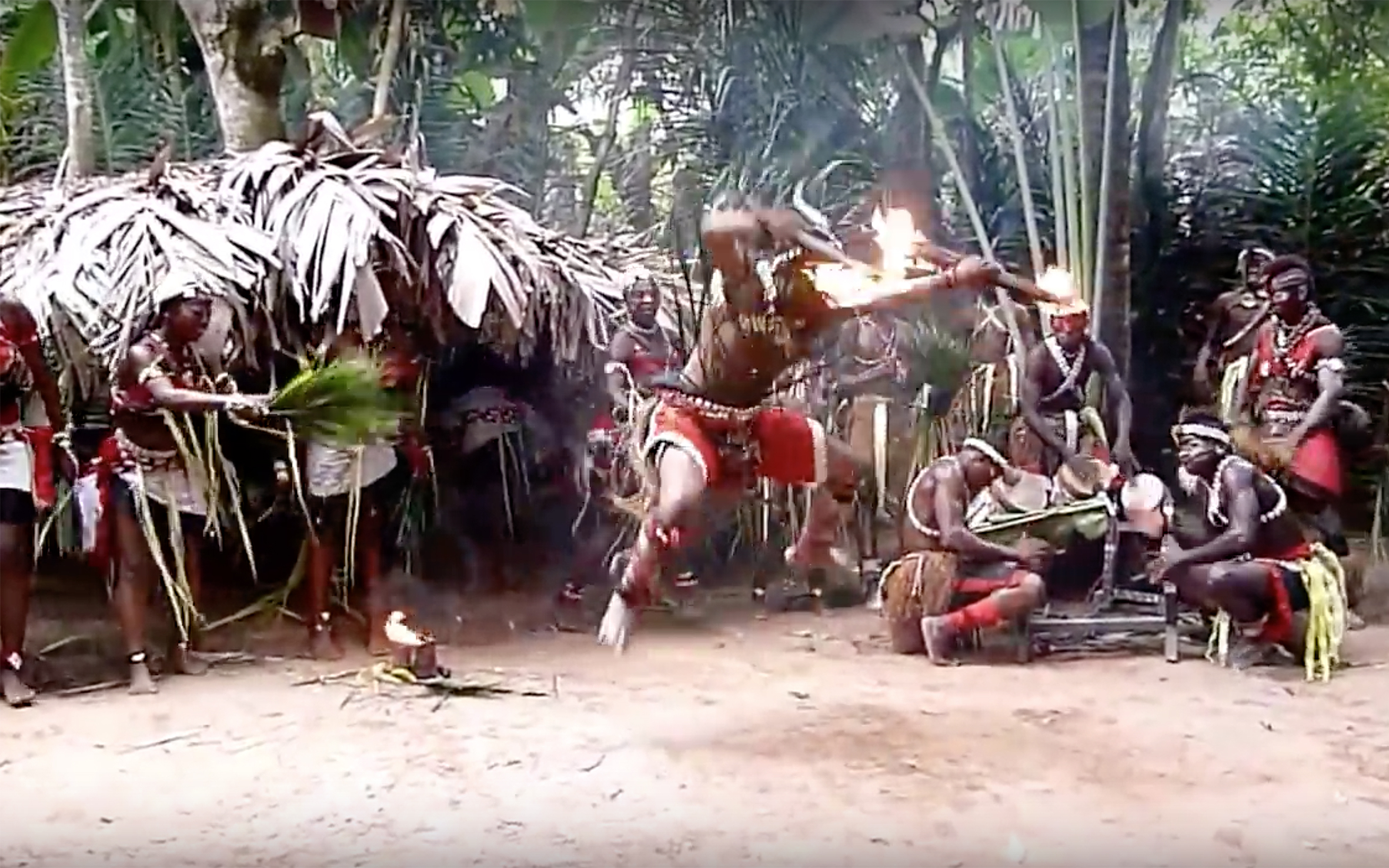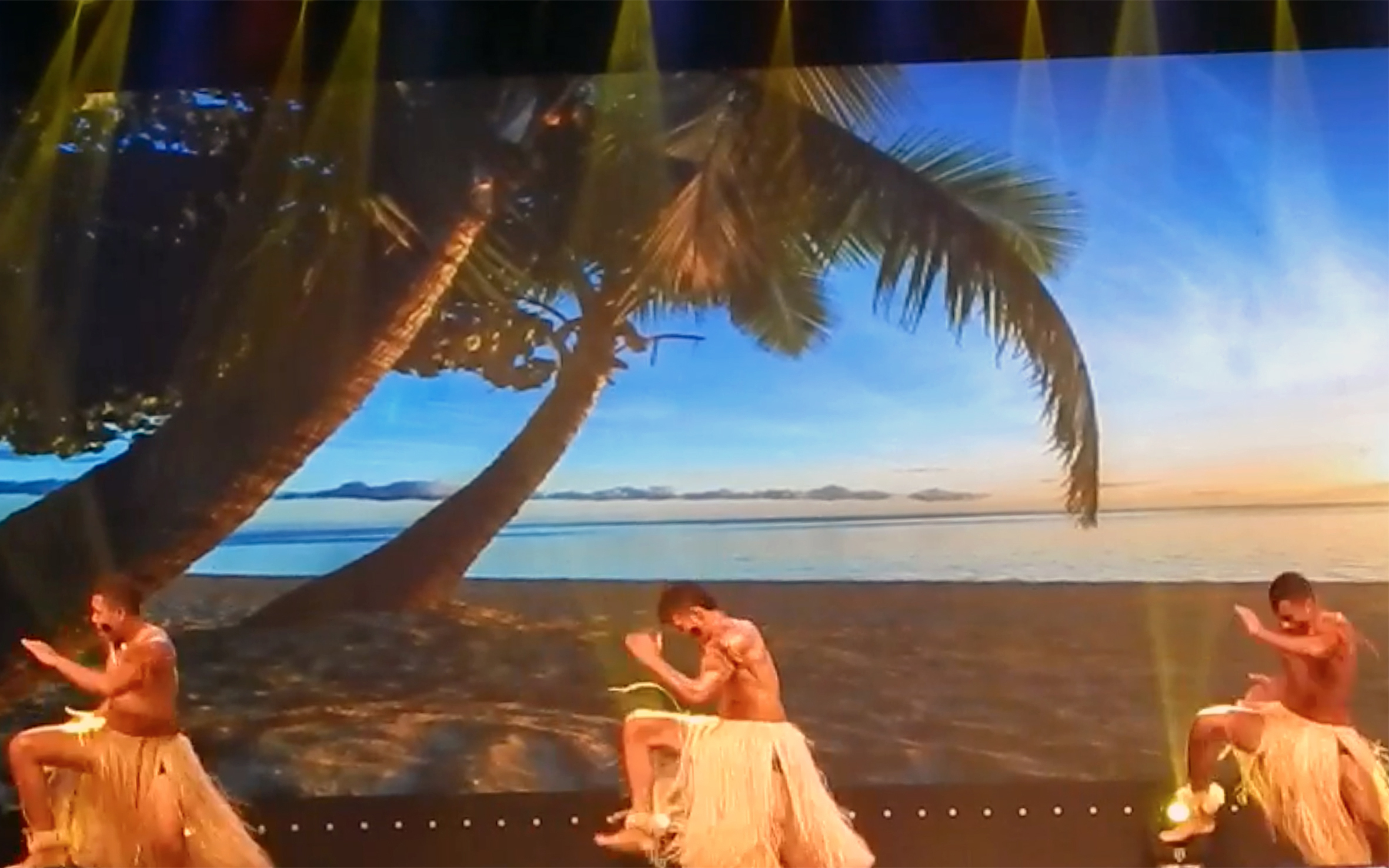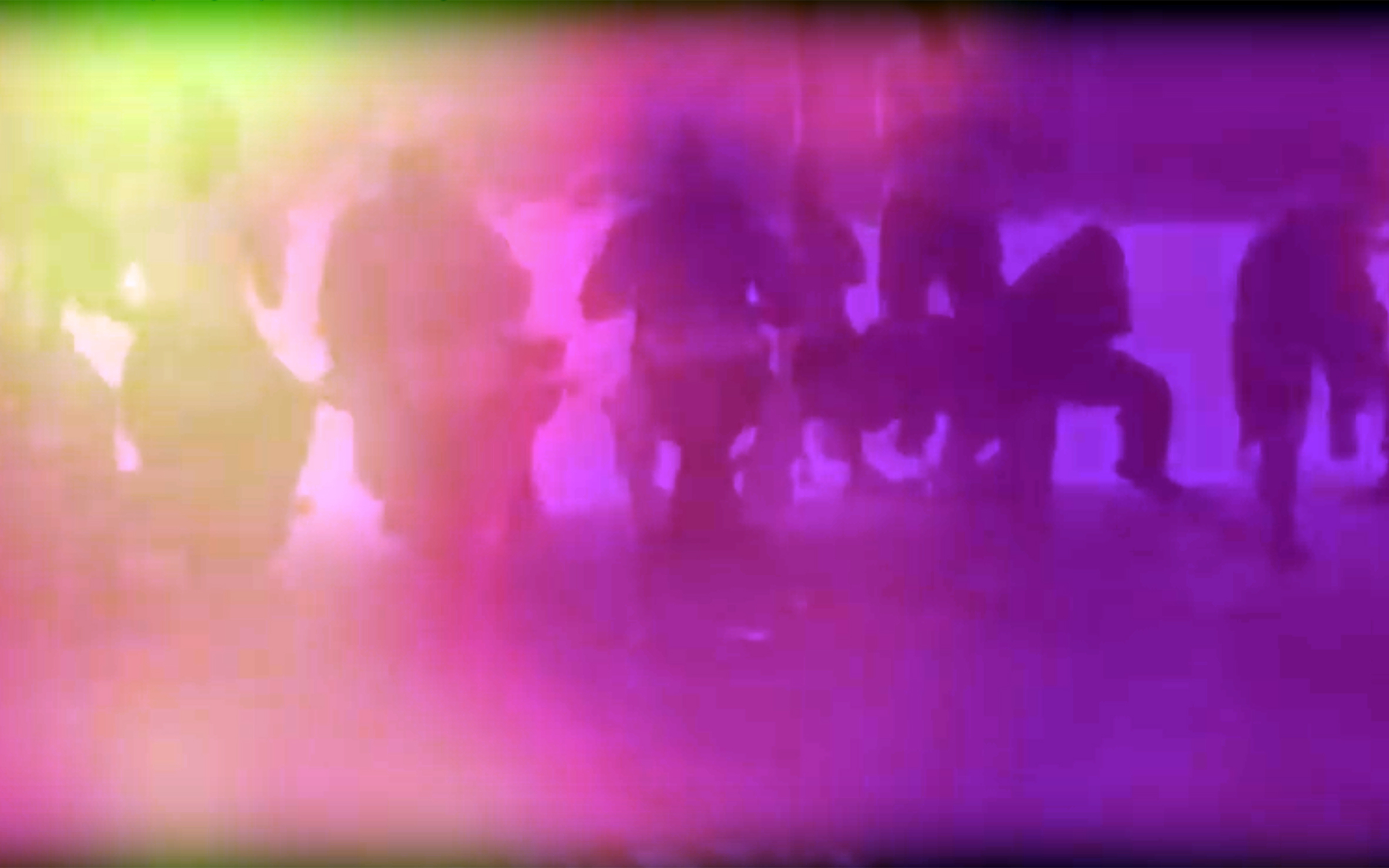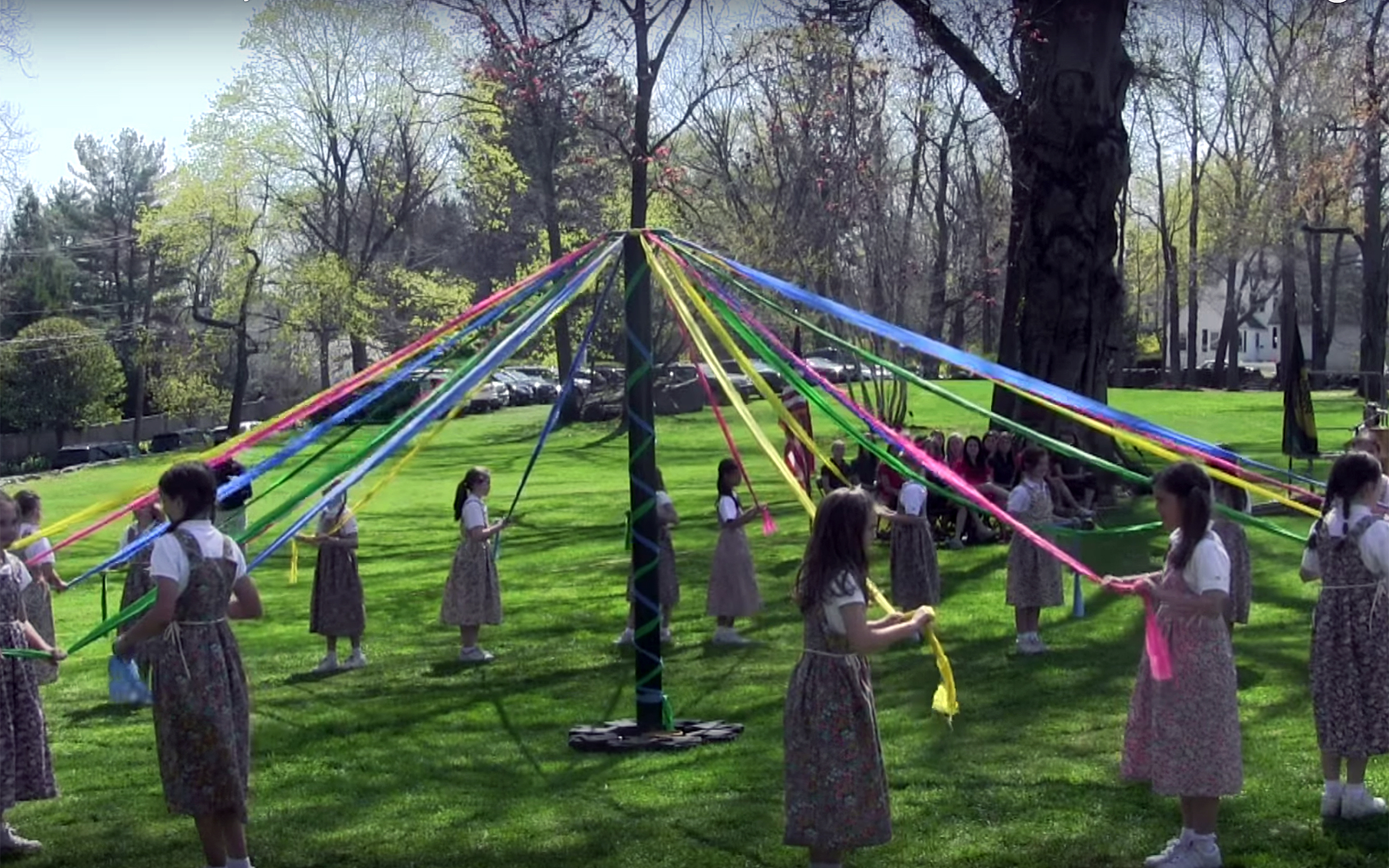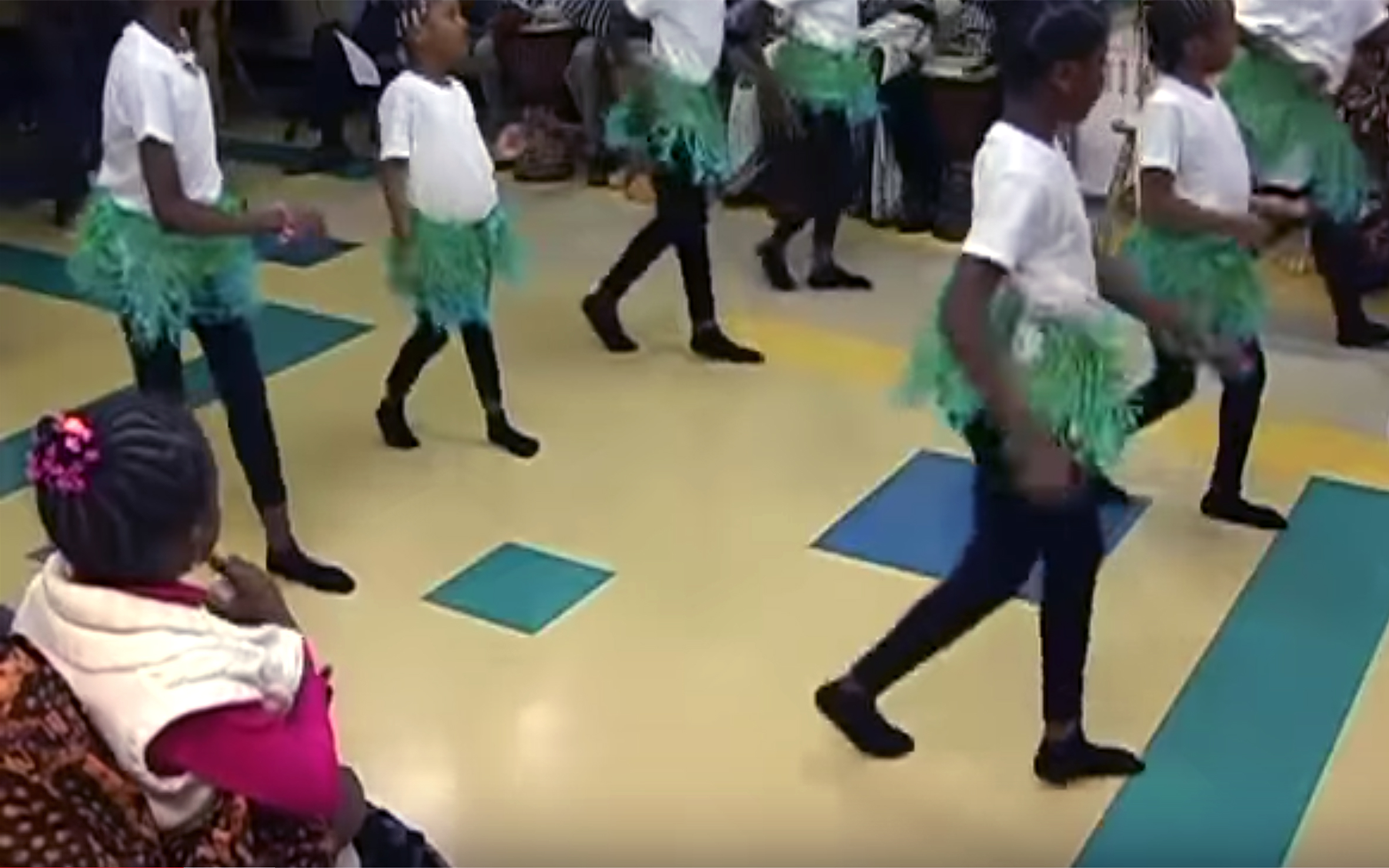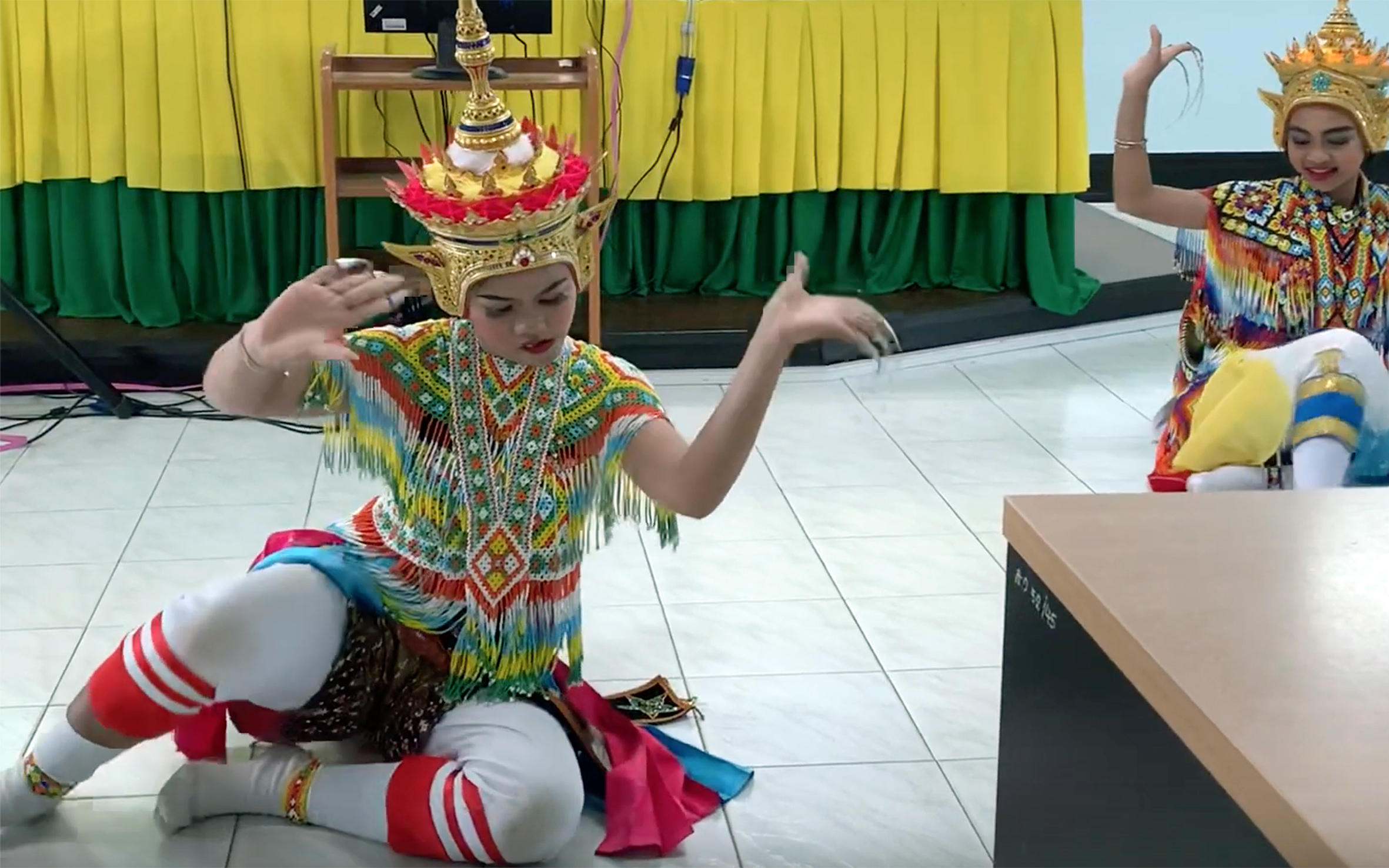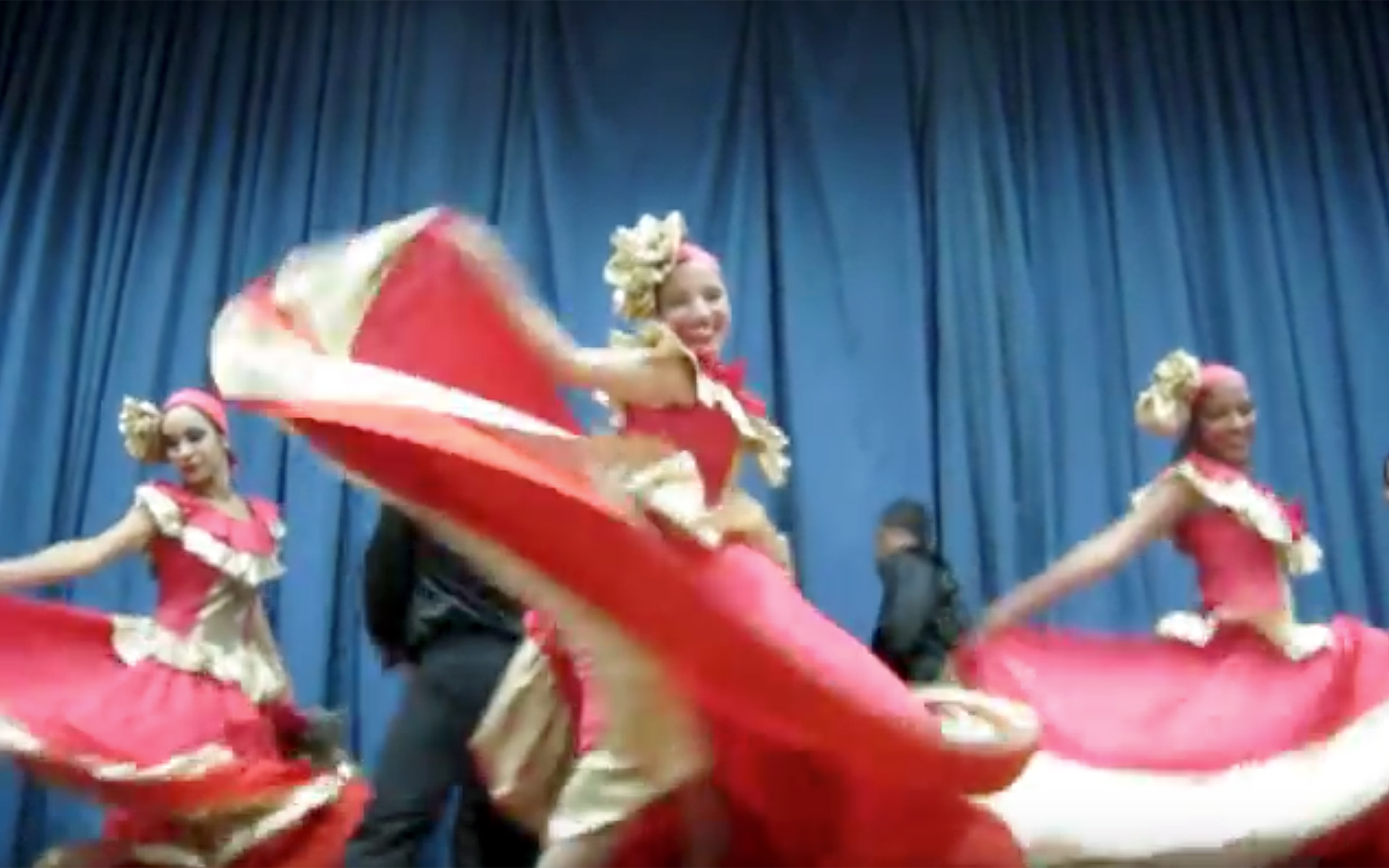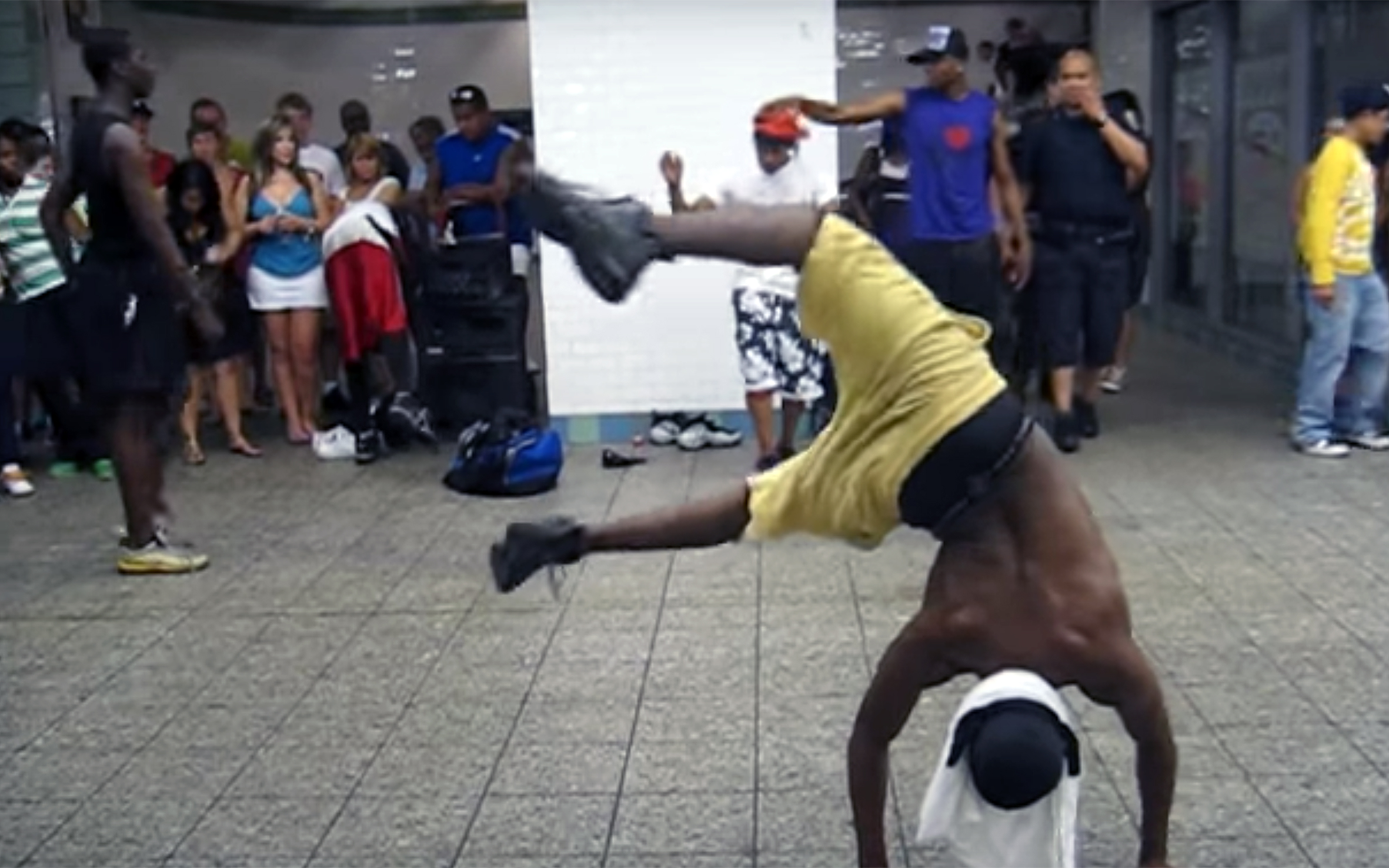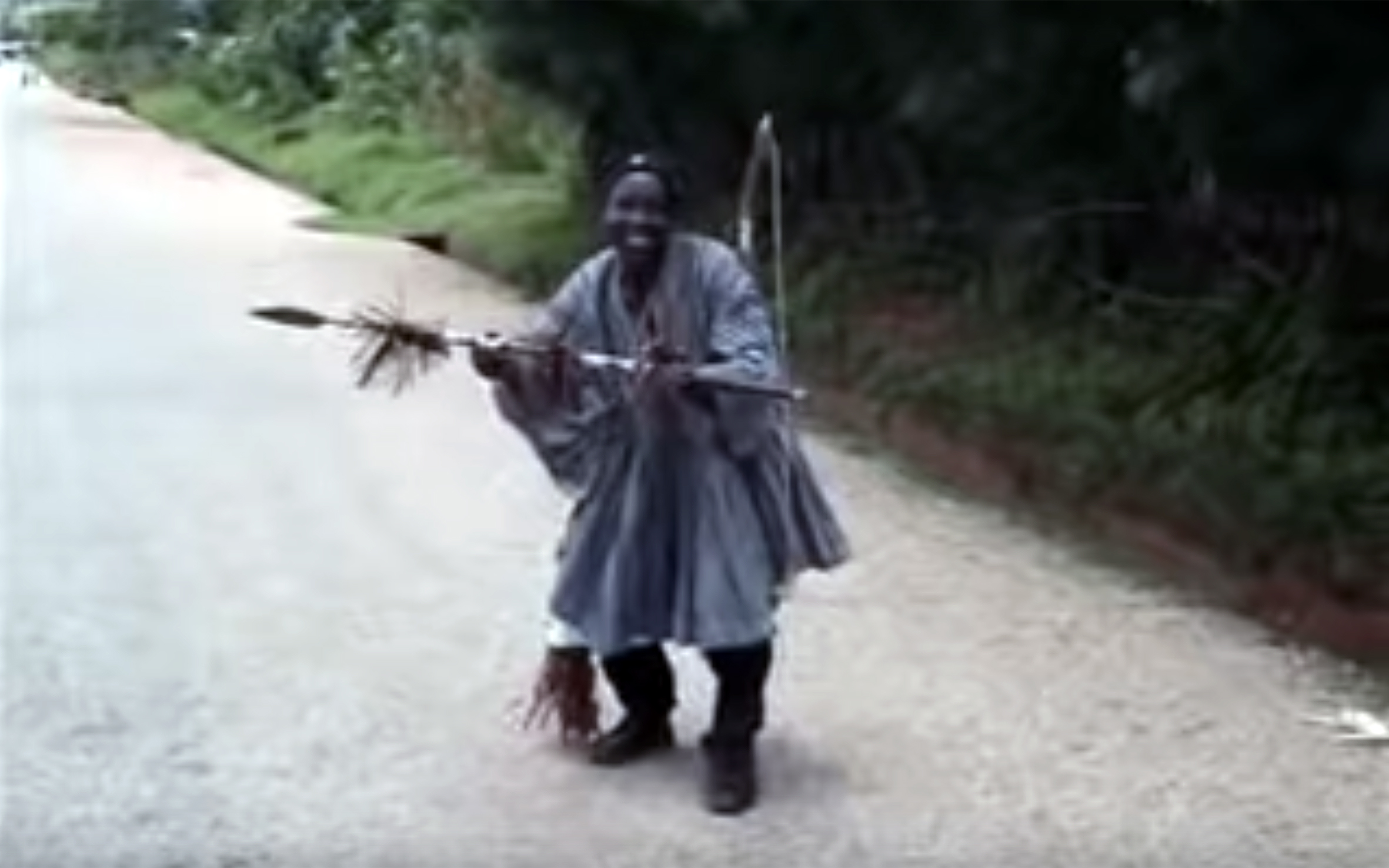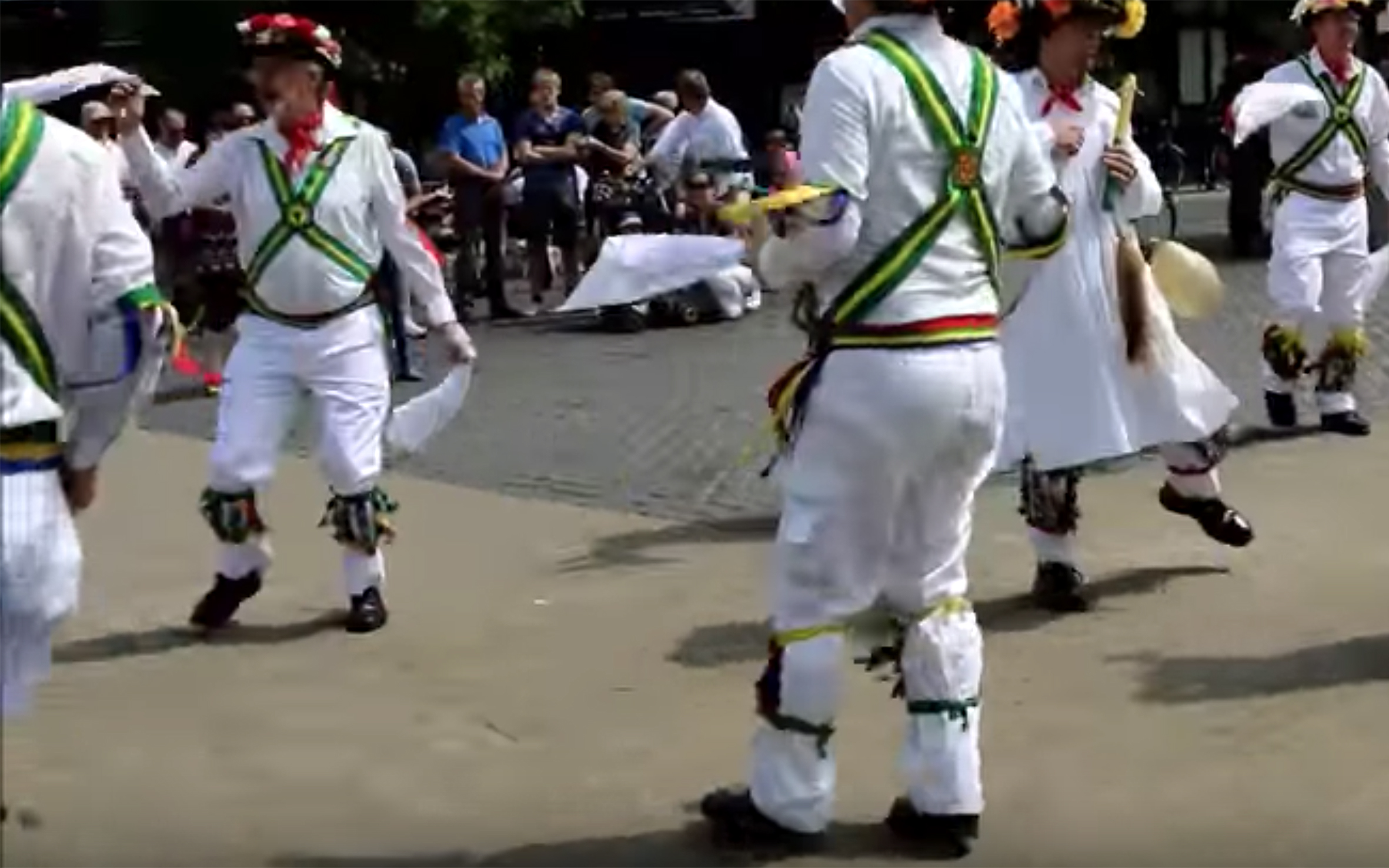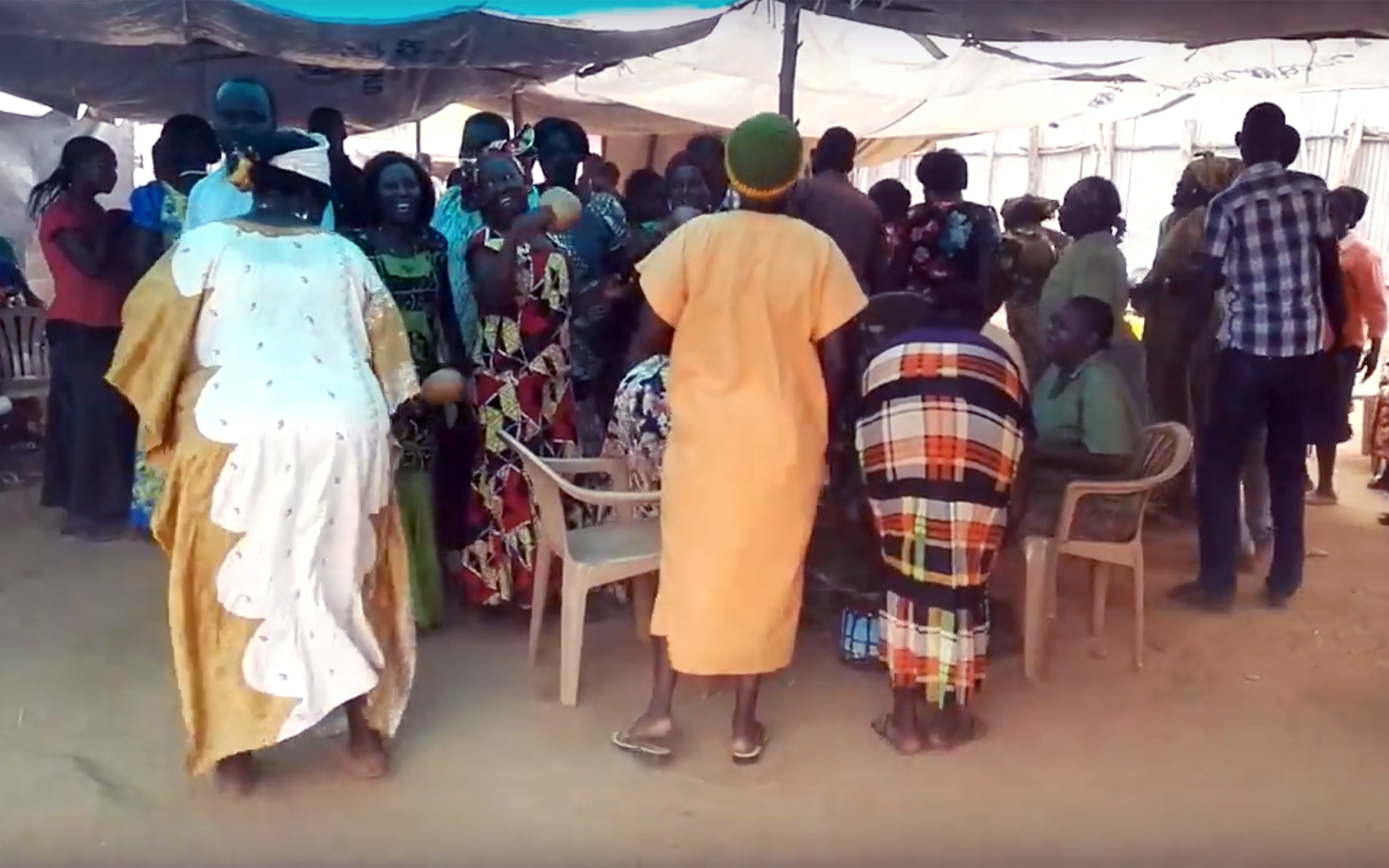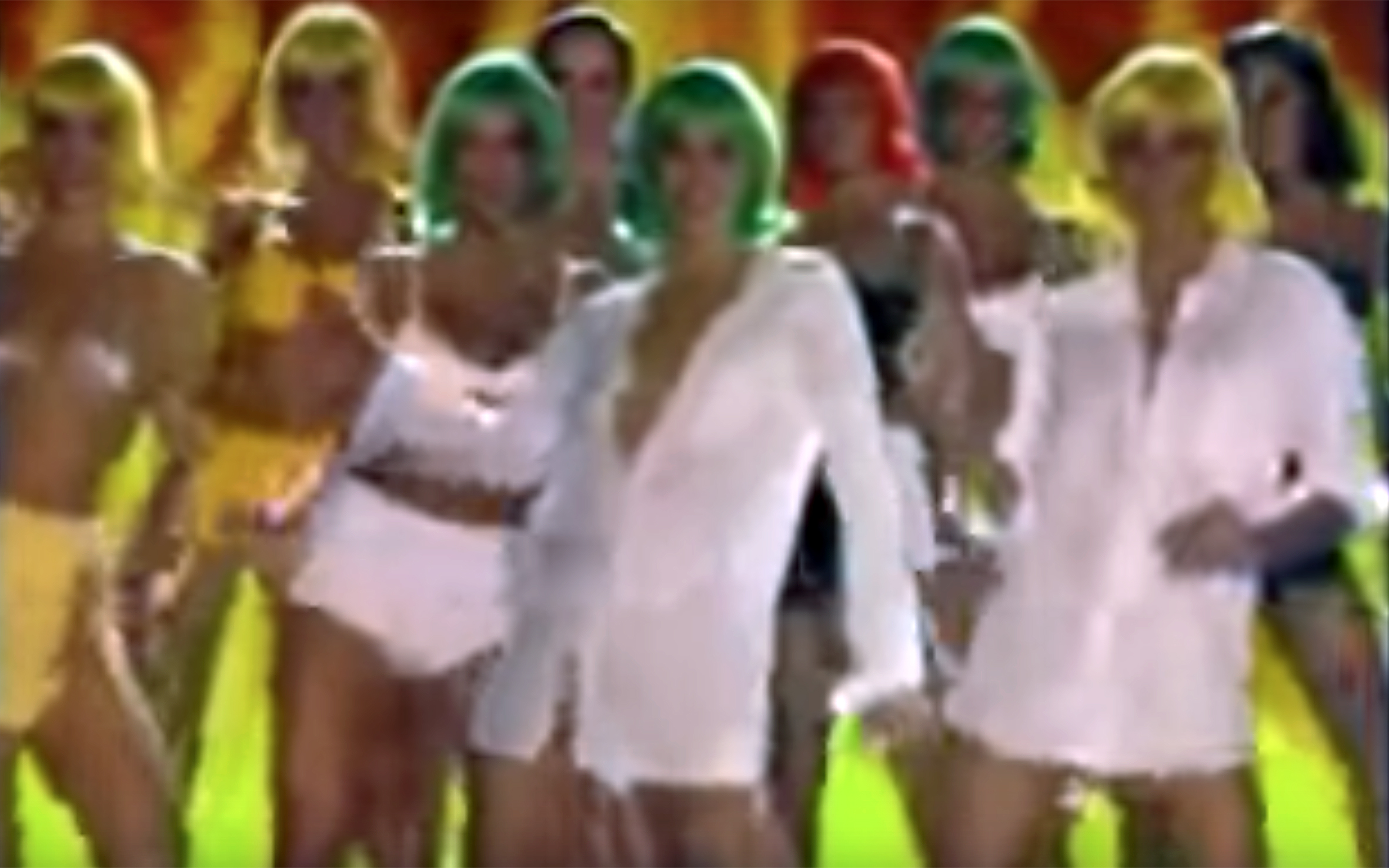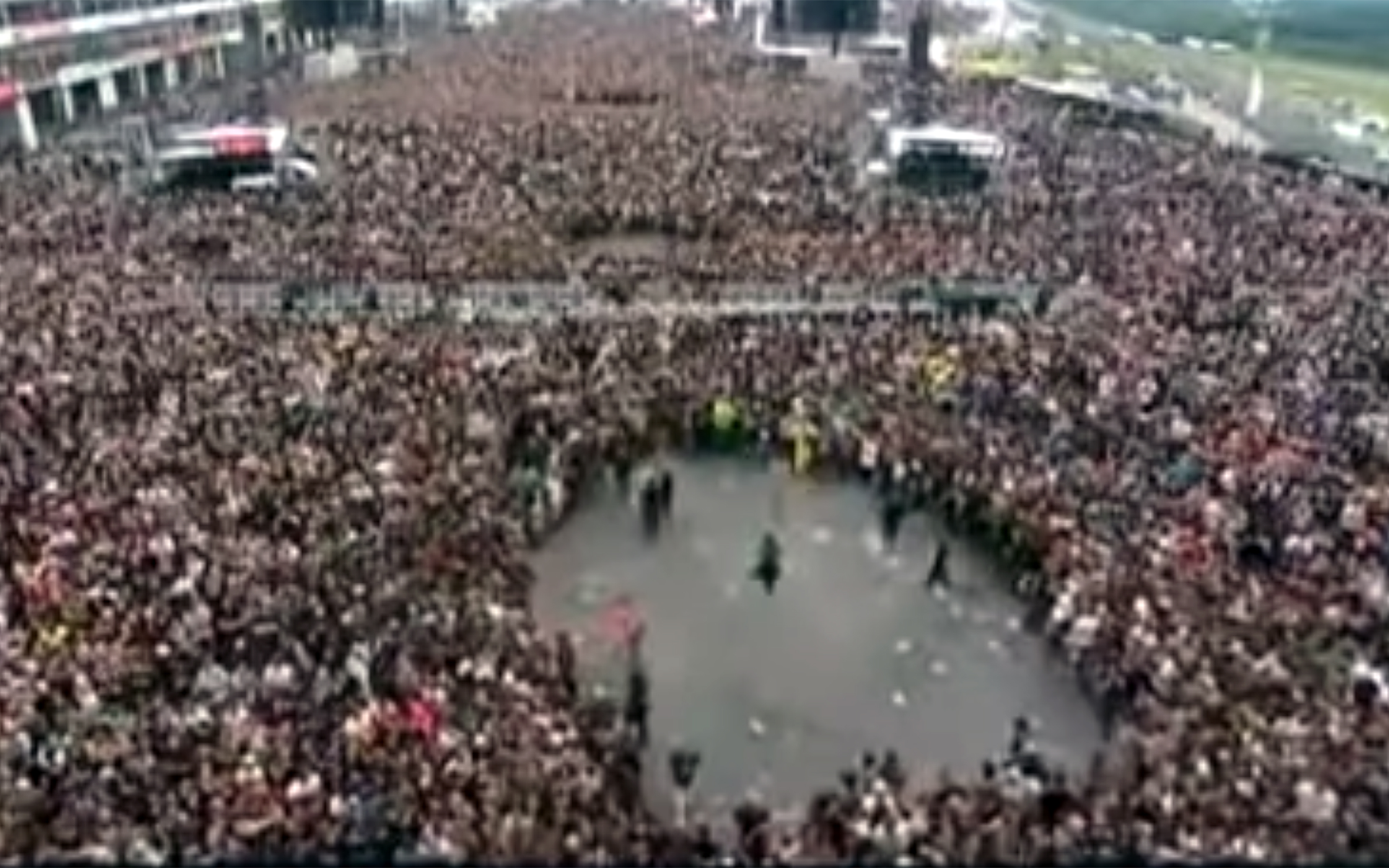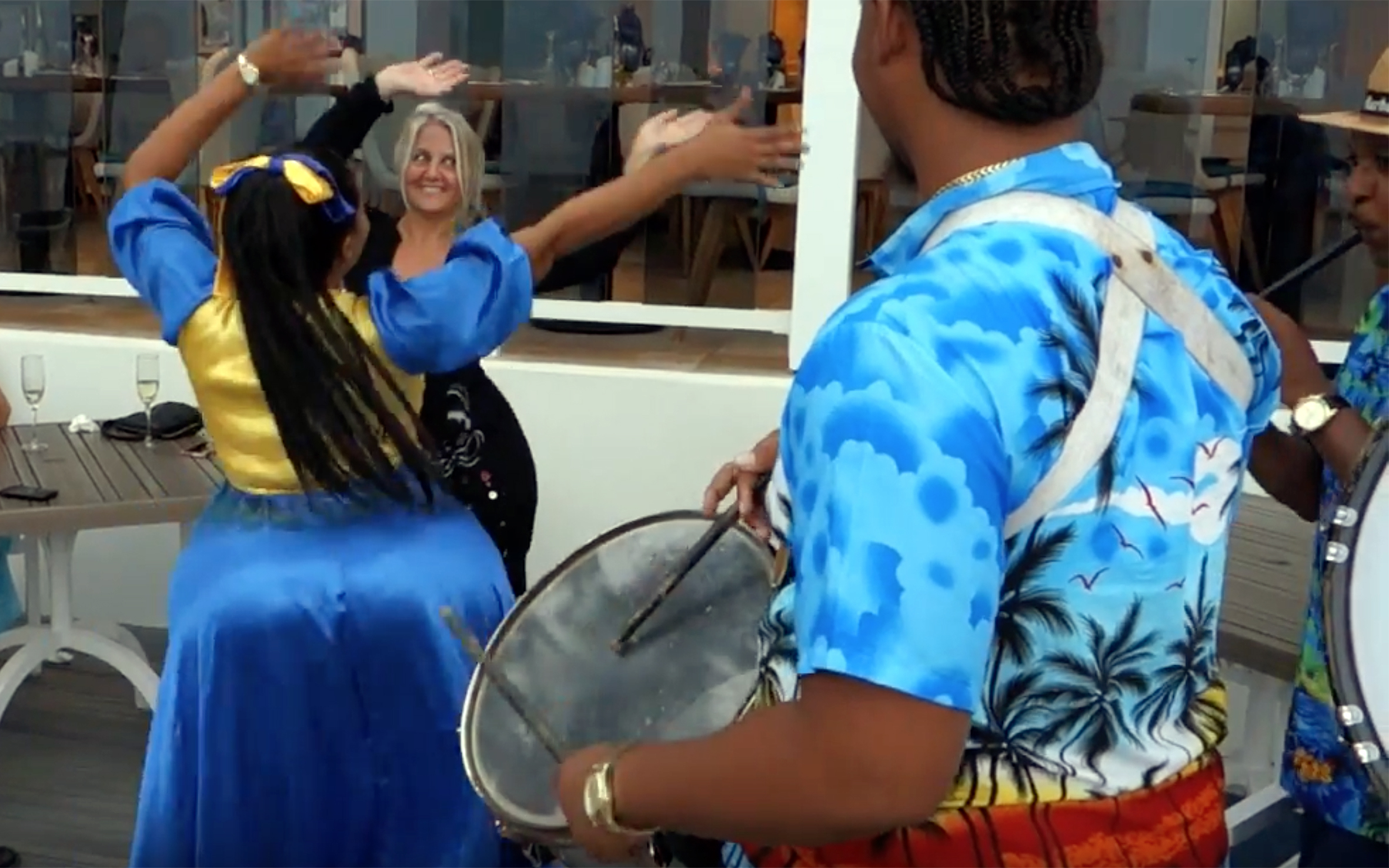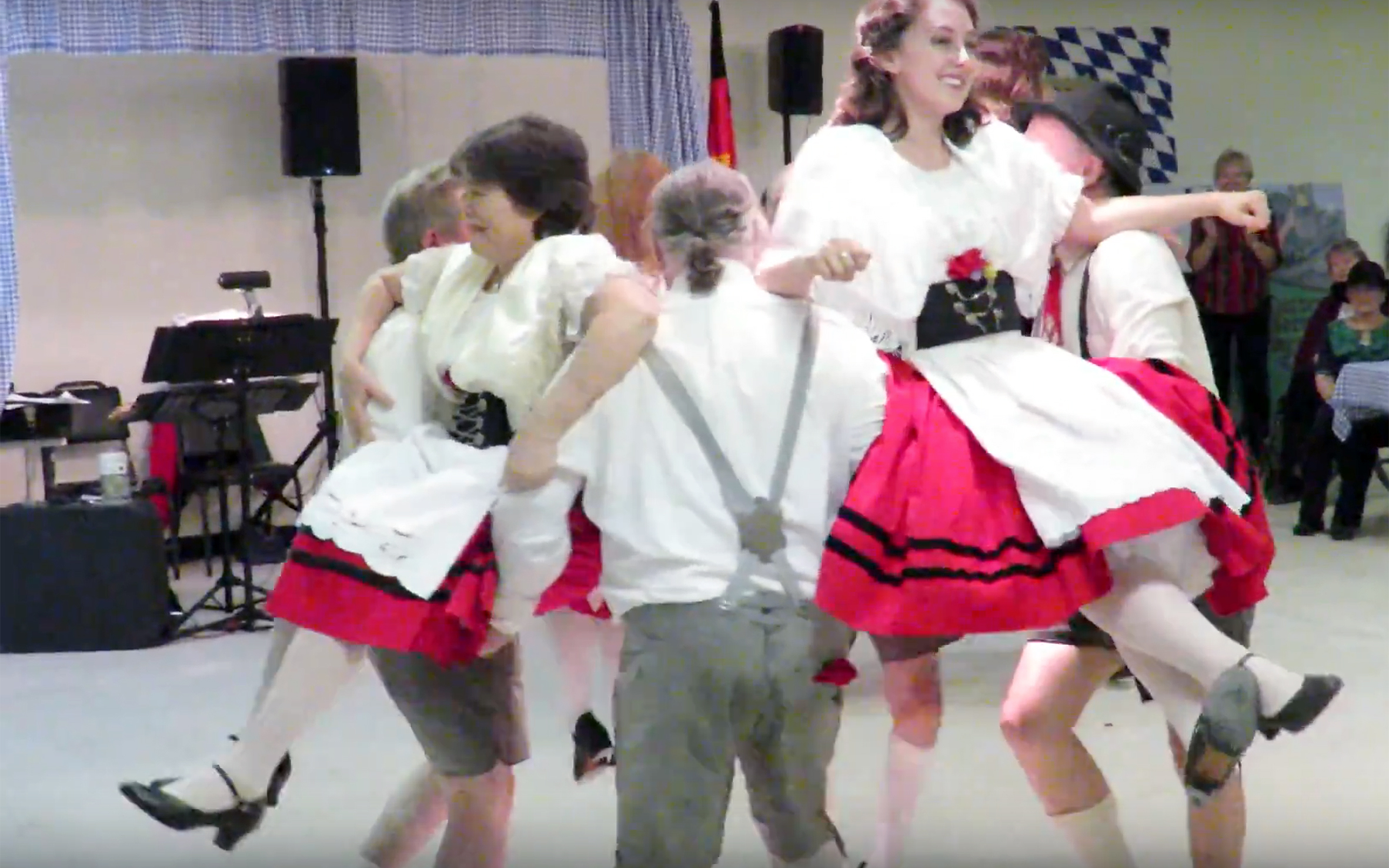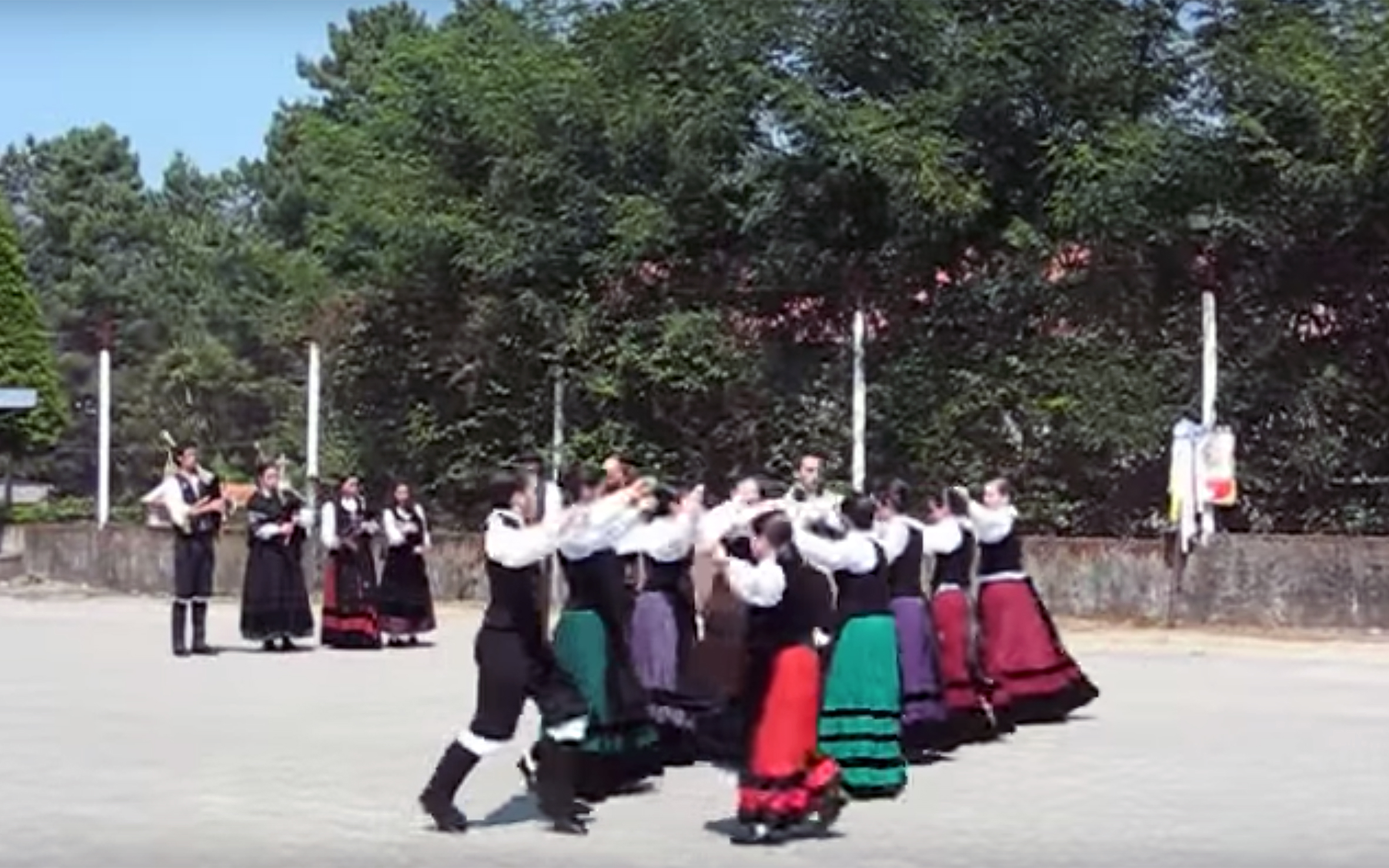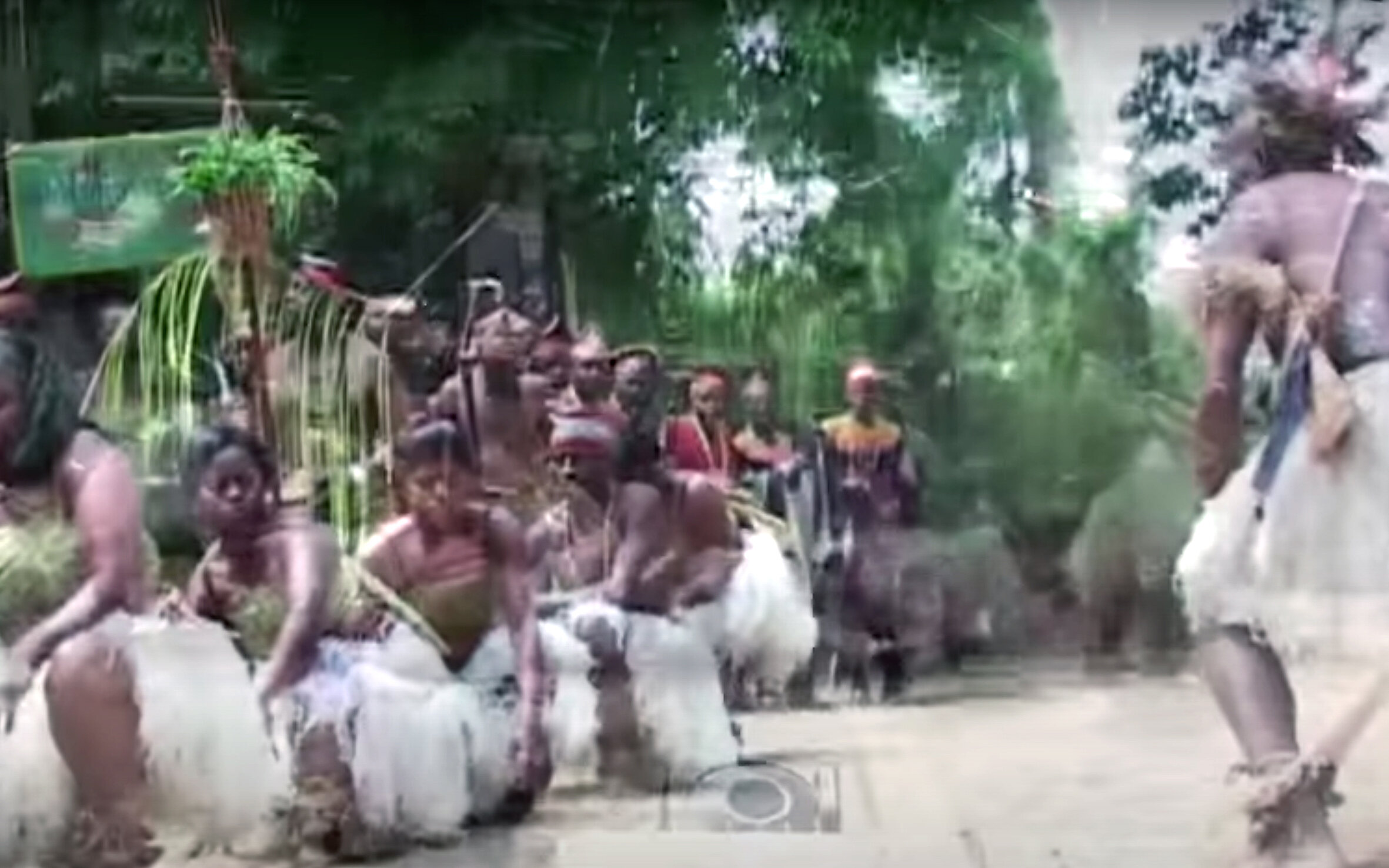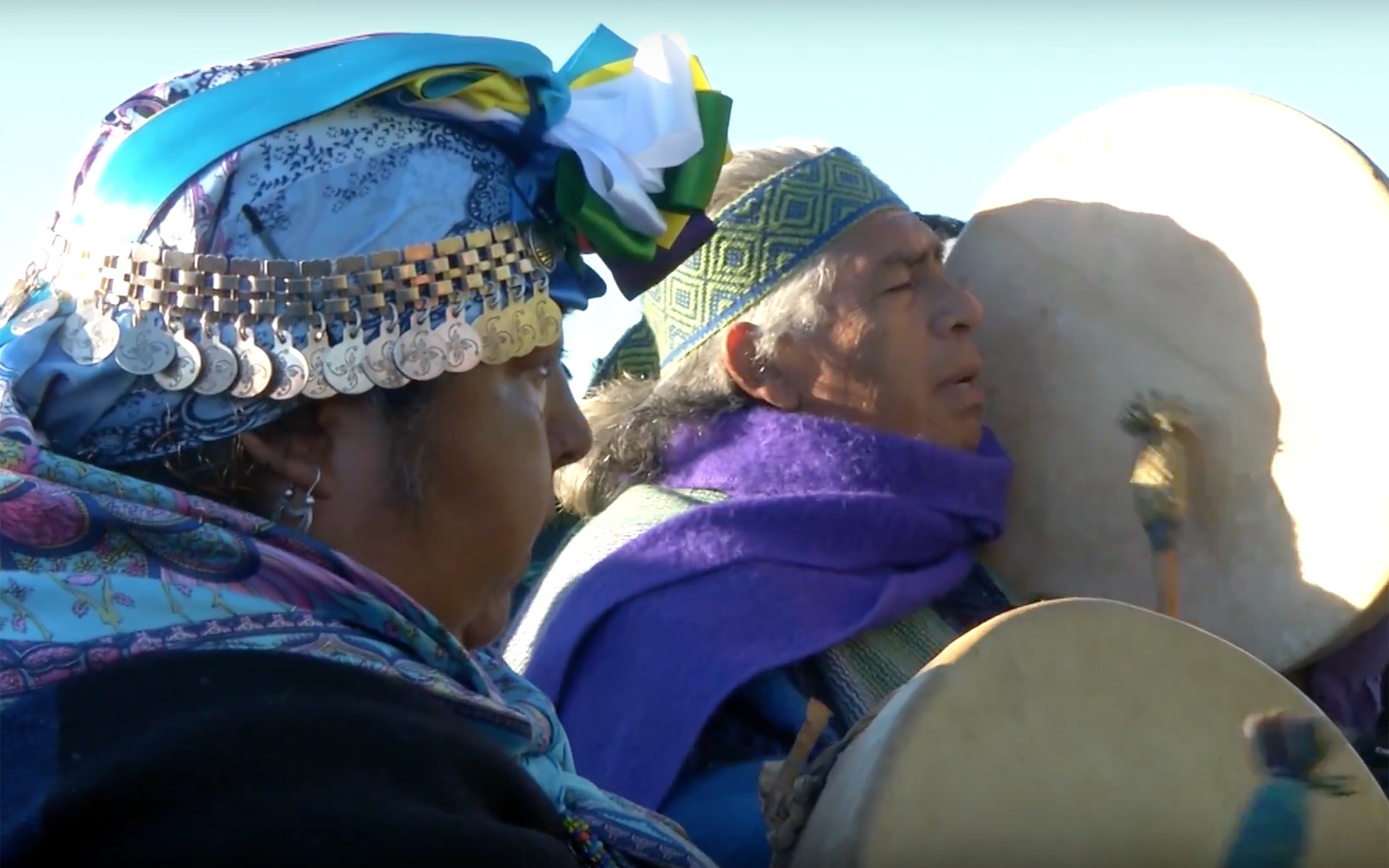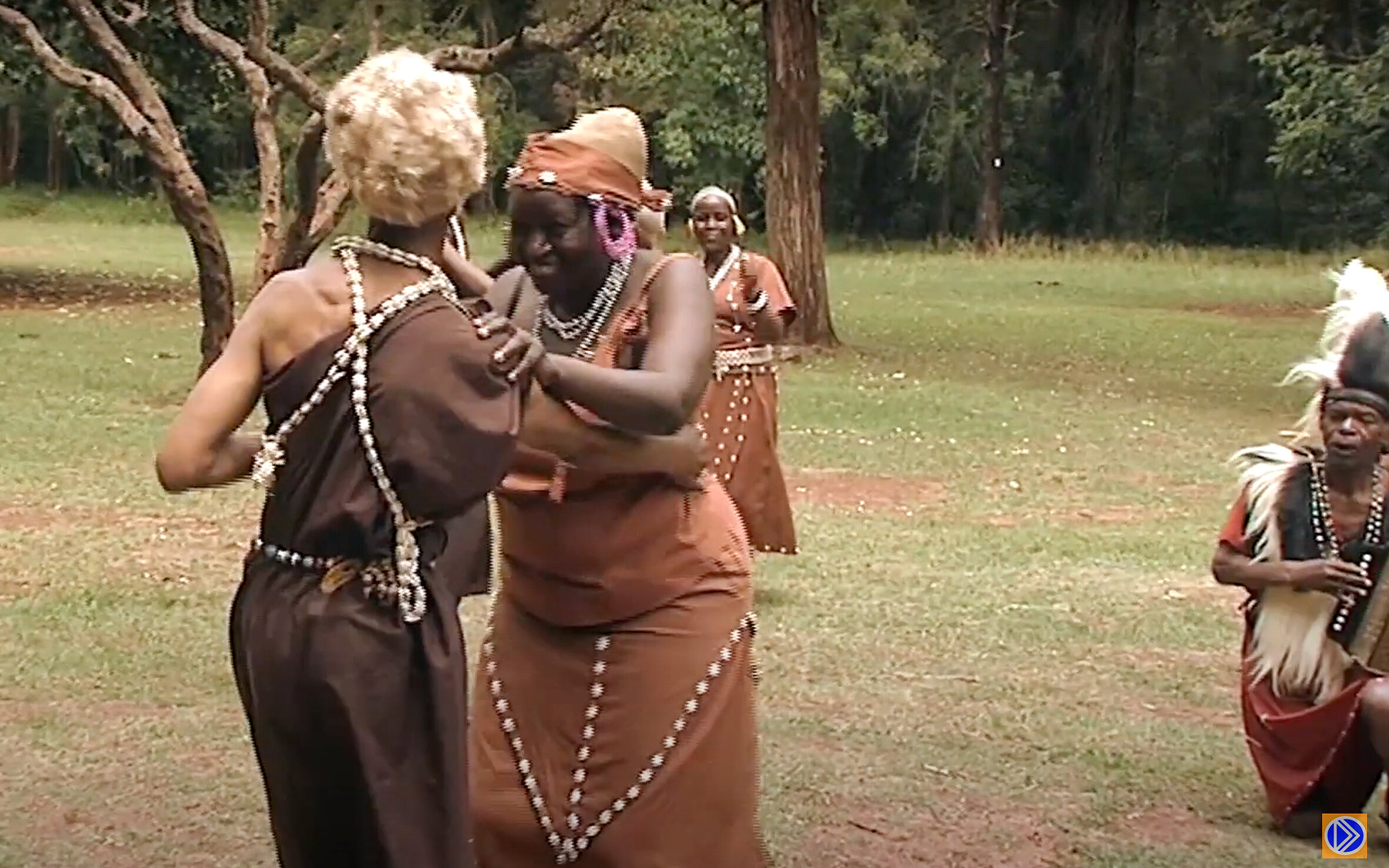558.Maasai Jumping Dance / Kenya
MAASAI JUMPING DANCE is a special style of dancing performed by the Massai people from Kenya, an ethnic community that has managed to withstand the test of time and retained its rich traditions. The Maasai have a distinctive dance that involves forming a circle and jumping up high to show their strength and stamina as tribal warriors. The women wear bead necklaces or shanga round their necks and they sing to traditional music. The beautiful colours of their shukas and beads combined with their mohawk kind of hairstyles separate them from any other dancers in Kenya.
559.MACARENA / Global
MACARENA is a Spanish dance song by Los del Río about a woman named Macarena. Appearing on the 1993 album “A mí me gusta”, it was an international hit in 1995, 1996, and 1997, and continues to be a popular dance at weddings, parties, and sporting events. It is one of the most iconic examples of 1990s dance music. In the video produced for the song, a guy is getting ideas for the dance by watching clips of kids dancing to the song with his cat. Two people come to his house with a made up dance to it. Soon, more people come outdoors of his house, doing the dance we all know today. The video focuses on everyone doing the dance.
560.Mader / Germany
MADER also called THE COURTING DANCE is a German couples dance in which the men try to woo the women with affection and signs of their dexterity and strength. The mischievous men will occasionally lift the girls while spinning them.
561.Maglalatik / Philippines
MAGLALATIK is an indigenous dance from the Philippines. Coconut shell halves are secured onto the dancers’ hands and vests upon which four or six more coconut shell halves are hung. The dancers perform the dance by hitting one coconut shell with the other— sometimes the ones on the hands, the ones on the body, or the shells worn by another performer, all in time to the fast drumbeat. Like many native Filipino dances, it is intended to impress the viewer with the great skill of the dancer.
562.Mahraganat / Egypt
MAHRAGANAT is a genre of electronic dance music that originated in Cairo and it is also a dance performed to this kind of music. It is a fusion between simplified hip-hop merged with some other dance styles from this region, like Knife dance or Baladi dance. Mahraganat is often very lyrical in the way it translates the lyrics of the song into a movement. There are many variations and styles within this kind of dance and it evolves organically.
563.Maibaum-Tanz / Germany / Austria
MAIBAUM-TANZ is a tradition going back to the 16th century of dancing around the maypole in Germany and Austria. A decorated tree is usually erected either on May 1st or on the evening before. In most areas, especially in Baden-Württemberg, Bavaria and Austria, it is usual to have a ceremony to erect the maypole in the village. The custom of combining it with a village or town fete, that usually takes place on April 30th, May 1st or at Pentecost is widespread. This tradition is especially strong in the villages of the Bavarian Alps. The pole is usually painted in the Bavarian colours of white and blue and decorated with emblems depicting local crafts and industry. The event is usually followed by a May dance or Tanz in den Mai
564.Maibi Jagoi / India
MAIBI JAGOI is a dance style from the hills of Manipur in India. Maibi Leiching Jagoi is a popular festival in Manipur that mirrors the cultural heritage of the Pre-Vaishnavite tradition of the region. The dance symbolises the creation of life and growth of civilisation in a highly rhythmic and absorbing style and is performed before the Sylvan deity to bring peace and prosperity to the land.
565.majorette dance / Global
MAJORETTE DANCE is a dance performed by a majorette, a baton twirler whose twirling performance is often accompanied by dance, movement, or gymnastics. These dances are primarily associated with marching bands during parades. Majorettes can also spin knives, fire knives, flags, light-up batons, rifles, maces and fire batons. They do illusions, cartwheels, and flips, and sometimes twirl up to four batons at a time. Majorettes are often confused with cheerleaders—baton twirling, however, is more closely related to rhythmic gymnastics than to cheerleading.
566.Mayilattam / India
MAYILATTAM is an artistic and religious form of dance performed in the Hindu temples of Tamil Nadu and Kerala in reverence to Lord Subrahmanya, whose mystical vehicle is a peacock. Mayil means peacock and atta means dance. Mayilattam performers wear peacock costumes, with beaks that can be opened and closed using a thread. The performers do not dance on their bare feet but on a tall piece of wood attached at the end of their feet. This art requires extensive training and practice. Even today this dance is performed in all Murugan (Lord Subrahmanya) temples as a tradition during festivals.
567.Mak Yong / Malaysia
MAK YONG is a traditional dance drama from northern Malaysia. It is considered the most authentic and representative of Malay performing arts, mostly untouched by external sources. Although most traditional Malay dances were influenced by India, Java and other parts of Southeast Asia, Mak Yong’s singing and musical repertoire are unique. Most of the stories are derived from the Kelantan- Pattani mythology. The performance begins with an offering, paying respect to the spirits. It is followed by dancing, acting and improvised dialogues. Stories are presented in a series of three-hour performances over several nights. The lead dancer, called “pak yong”, dresses as a king. The cast usually includes a queen in the second lead, palace girls and jesters. Traditionally, all performers were female except for the male clowns.
568.MALE DANCE / Finland
MALE DANCE a special choreography created in recent years to encourage Finnish men of all ages to dance and to play with the common stereotype that Finnish men do not like to dance. The choreography is very simple and stiff.
569.Malende / South Africa
MALENDE is a dance by the Vhavenda women, Southern African people living mostly near the South African- Zimbabwean border. It is danced by every female from young to old—any grown respectable woman of the Vhavenda community can participate in this dance under the supervision of the elders. The basic Melende step is vigorous. The torso is the fulcrum for flailing arms and legs that stamp the ground aggressively in continual cross rhythmic opposition to clapping and singing.
570.malipenga / Malawi
MALIPENGA is a popular dance and music from the Tonga people of Nyasaland, now called Malawi. It is performed by the Nkhata Bay District. The dancers imitate the military drills and use singing horns. First accounts of Malipenga dance were done after the end of the First World War. Its origins are linked to the system of military parades introduced by the British officers of the King’s African Rifles that fought against the Germans.
571.MALoya / Reunion Island
MALOYA is a dance of African and Malagasy slaves. There are two types of Maloya, religious—honouring ancestors and used for praying, and secular— performed with songs criticizing slaves’ masters.
572.MAMBO / Cuba
MAMBO is a dance style that developed originally in Cuba. The word mambo, similarly to other Afro American musical denominations such as conga, milonga, bomba, tumba, samba, semba, bamba, tambo, tango, cumbé, cumbia and candombe, denotes an African origin, particularly Congolese, as it displays certain characteristic combinations of sounds which belong to the Niger- Congo linguistic complex. Mambo was invented during the 1930s by the native Cuban musician and composer Arsenio Rodríguez. It uses a single rhythm step between two breaking action rock steps. Normally, it is danced to fast tempo Latin music, similar to salsa music but more staccato. Additionally, it has a lot in common with cha-cha but doesn’t use a triple rhythm or split beats. Mambo uses considerable staccato type action unlike salsa, which is the next generation of mambo.
573.Manele / Romania
MANELE is a music and dance style coming from Romania. It can be divided into “classical Manele” and “modern Manele”. The “classical Manele” is a Turkish-derived genre performed by lӑutari in a lӑutӑreascӑ manner, while the “modern Manele” is a mixture of Turkish, Greek, Arabic, Bulgarian and Serbian elements, generally using electronic instruments and beats. Similar music styles are also present in other Balkan regions. The modern Manele originated in the 1980s and early 1990s as underground translations and imitations of Turkish and Arabic songs. Most radio and television channels or media boycott Manele music—it has been prohibited in some cities of Romania in public transport taxis or festivals.
574. MĀORI DANCE / Cooks Island
MĀORI DANCE is a set of traditional dances by the Maori people from the Cooks Island. Dance is an important part of the local culture, often performed at multicultural festivals. One of the popular traditional Maori dances is called Ura—a sacred ritual usually performed by a female who moves her body to tell a story, accompanied by intense drumming by at least five drummers. Moving the hips, legs and hands give off different gestures to the audience to tell a story, typically related to the natural landscape such as the ocean and birds and flowers, but also the feelings of love and sadness. Women typically wear a grass skirt, with flowers and shell headbands and necklaces. Men vigorously flap their knees in a semi-crouched position while holding their upper bodies steady, and typically wear grass skirts and headbands.
575.Mapouka / Ivory Coast
MAPOUKA also known as DANCE OF THE BEHIND is a traditional dance from the Dabou area of southeast Ivory Coast that originated within the Aizi, Alladian and Avikam people. The dance is mostly performed by women shaking their rear end side to side, facing away from their audience, often while bent over. The worldwide popular twerking dance has been attributed to the Mapouka dance via popular media, while some argue the historically correct origin remains the Bump. It is very sensual and the sexiest of the booty dances.
576.MARACADON / Burkina Faso
MARACADON is a traditional dance move from Bobo Dioulasso, a city in Burkina Faso.
577.MARAICHINE / France
MARAICHINE is a traditional dance from Brittany. It is performed by two lines of people facing each other.
578.Margam kali / India
MARGAM KALI is an Indian group dance from Kerala, practiced by the Saint Thomas Christians who trace their origins to the evangelistic activity of Thomas the Apostle in the 1st century. “Margam” means path, way or solution in Malayalam, but in the religious context it is known as the path to attain salvation. The process of conversion to Christianity was known as “Margam Koodal”. The original Margam Kali describes the arrival of St. Thomas in Malabar, the miracles he performed, the friendship as well as the hostility of the people among whom he worked, the persecution he suffered, the churches and crosses he put up in various places. These details are incorporated in the various stanzas of the Margam Kali songs. Margam Kali is an important element in the tradition of St Thomas among the Syrian Christians of Malabar Coast.
579.Mariene Dances / Kenya
MARIENE DANCES are traditional dances of the Mariene people in Kenya.
580.Marinera / Peru
MARINERA is a courtship dance that originated along the coastal regions of Peru. This romantic and graceful dance is performed by a couple dressed in elegant clothing, and uses handkerchiefs as props. It features complex choreography, with the couple never coming into actual physical contact. Marinera is considered the national dance of Peru and has three main variations: Marinera Norteña, Marinera Limeña, Marinera Serrana. It is traditionally accompanied by several instruments including cajón drum, guitars, clarinets and bugles.
581.Marquese Scott Dance / USA / Global
MARQUESE SCOTT is an American animation dancer. He has performed across the world and presented his work in music videos. His style of animation dance includes waving, gliding, and popping. His videos go viral and people try to imitate his style in their own videos shared on social media platforms.
582.Maruni / Nepal / India
MARUNI is a Nepali dance from Western and Eastern Nepal, Sikkim and Darjeeling. It is mostly performed in the western and mid-western hills of Nepal. Its styles vary according to the place and depend on the songs, which talk about life and culture. Maruni is performed by both men and women wearing colorful clothes, shining ornaments and nose rings.
583.Mask dances / Latvia
MASK DANCES are common in the Latvian tradition. Mask walks, which include dances, begin in autumn and end in Meteṇi in February or early March, but the most active and significant ones are during the winter solstice—Christmas. There are different mask walks in each region and they are closely linked to the fertility magic—blessing for the next year, the fertility, the fields, the seed and the family. People of all ages participate in the masquerade, usually in a mixed group led by various characters. The participants wear masks of animals, things or supernatural beings. The processions used to go from house to house, dancing and joking.
584. MASS EFFECT / Global
MASS EFFECT is a funky fresh dancing style that can be found in the science fiction action role-playing third-person shooter video game series, released on Windows, PlayStation 4 and Xbox One in March 2017. The game is about a soldier named Commander Shepard, whose mission is to save the galaxy from a race of powerful mechanical beings known as the Reapers and their agents, including the first game’s antagonist Saren Arterius. Mass Effect series have been met with commercial success as well as universal acclaim. It is highly regarded for its narrative, character development, voice acting, universe, and emphasis on player choice affecting the experience, as well as for funky dances.
585.Matki / India
MATKI is a community dance of the Malwa region, which includes districts in western Madhya Pradesh, India. It is a solo dance performed by female dancers on special occasions such as weddings, birthdays and other events. Dancers are dressed in sarees or in lehenga decorated with many ornaments. Initiated by a lone woman locally called Jhela, the dance is joined by others dressed in their traditional Malwa costumes and with veils covering their faces. They move rhythmically to the beating of a drum, locally called Matki. The dance is generally performed in circular motion, with the dancing women balancing earthen pots on their heads.
586.Mayan welcome dance / Guatemala
MAYAN WELCOME DANCE is a traditional ceremony performed by indigenous people from Guatemala.
587.Maypole Dance / England / Wales / Jamaica
MAYPOLE DANCE is a dance around a tall wooden pole erected as a part of various European folk festivals. It was found primarily in England and in areas of the Scottish Lowlands and Wales, which were under English influence. However, the earliest recorded evidence comes from a Welsh poem written by Gryffydd ap Adda ap Dafydd in the mid- 14th century, in which he described how people used a tall birch pole at Llanidloes, central Wales. The practice had become increasingly popular throughout the ensuing centuries, with the maypoles becoming “communal symbols” that brought the local community together. It is also a dance practiced in Jamaica.
588.Mazur / Poland
MAZUR is a traditional Polish folk dance from Mazovia. It combines similarity with mazurek and oberek (at a faster rate) and kujawiak (slow). It is characterized by a tendency to accentuate the second and third parts of the bar and a rhythmic figure with a 4-syllable group. It is a cheerful, dynamic dance, which was often danced at noble mansions. It is danced in the 3/8 meter and performed in a lively tempo. It features three steps in the course of a dynamic, fast walking with a flat leap between the third and first beat of the bar, as well as gliding steps forward, backward, sideways, or with a turn. These steps are frequently supplemented with ornamental elements and dynamic accents (“hołubiec” [clicking of heels], strikes, takeoffs, and stomps).
589.Mazurek / Poland
MAZUREK is a Polish folk dance in triple meter, usually at a lively tempo, and with strong accents unsystematically placed on the second or third beat. Its rhythm is the base of many songs, dances, instrumental and vocal pieces in Mazovia, the region of Lublin, Kujawy, and in the region of Łęczyca. It is a fast dance, yet a little bit slower than the oberek. Mazurek is danced by pairs whirling around a circle, with turns being made on the entire foot. Sometimes the change of the direction of movement and turns are accented with stamps. It arrived circa 1830 from Poland to France and was later brought to French colonies. It was common as a popular dance in Europe and the United States in the mid- to late nineteenth century. Nowadays it is only practiced during traditional exhibitions and festivals.
590.Mbalax / Senegal / Gambia
MBALAX is popular dance music of Senegal and Gambia, a fusion of popular Western music and dance such as jazz, soul, Latin, and rock blended with sabar, the traditional drumming and dance music of Senegal. The name derived from the heavy use of accompanying rhythms used in sabar called “mbalax”. Mbalax dancing is popular in nightclubs, at religious and social celebrations such as weddings, birthdays. New Mbalax dance movements constantly emerge, often with the increasing popularity of a particular song. Some examples of the Mbalax moves are: Ventilateur—“electric fan” describing the motion of the buttocks swirling suggestively; Xaj Bi—“the dog”, in which a dancer lifts his/her leg in imitation of a dog; and more recently Jelkati—a dance in which the upper arms, bent at the elbows, move in parallel motion from left to right.
591.Mbeng-Ntam DANCES / Gabon
MBENG-NTAM DANCES are dances performed by the Gabonese dance company called Mbeng-Ntam. Dance traditions in Gabon were mostly used in religious ceremonies. Different dances are used for different purposes and events (especially those of the Bwiti traditions), such as births, funerals, and coming-of-age ceremonies. Today, all kinds of dances, both traditional and pan-African as well as styles from Europe and the US, are taught and performed in clubs and by dance troupes.
592.Medieval dance / England
MEDIEVAL DANCE in England as well as in other parts of Europe is poorly documented and the sources for understanding dance in the Middle Ages are limited and fragmented, composed of some interesting depictions in paintings, with few musical examples of dances, and scattered allusions in literary texts. According to the Oxford English Dictionary (1933) the term “carol” describing Medieval Dance was first used in England in manuscripts dating to as early as 1300 for a type of circle dance accompanied by singing. Medieval dance is nowadays performed as part of re-enactments and festivals.
593. MEKE / Fiji
MEKE is a traditional dance style coming from Fiji, typically performed during celebrations and festivals. It is a combination of dance and storytelling. It is performed by both men and women, and is viewed as a group collaboration in which men are expected to demonstrate strong, virile movements, while women are expected to be graceful and feminine. There are several versions of the Meke dance, such as the war dance, the men’s spear dance, the men’s or women’s fan dance and the sitting dance. The dancing and chanting are accompanied by rhythmic clapping and beating of the lali, a traditional Fijian drum.
594.Melbourne shuffle / Australia / global
MELBOURNE SHUFFLE originated in the late 1980s through the breakbeat and techno electronic music scenes in Melbourne, Australia. The dance became associated with various genres of rave music, incorporating hip hop dance moves such as “the running man” and “gliding” into its style. It has become known for the variants that employ hand movements, something not usually seen in other dances before it. The Melbourne shuffle dancing style involves rapid movement of the toes and heels. Depending on the variation, it may involve some arm movements. The dance is performed to electronic music and by the mid-1990s it became very popular in many clubs. With additional popularity, several additional variants of the dance emerged. However, the basic motion—heel to toe—remains present in all of them.
595.Mendiani / Mali / guinea
MENDIANI is a dance of the Malinke people of Guinea and Mali. It is a dance ceremony for girls between 6-14 years old. “Mendiani” is a term for virgin girls who are initiated into a secret society of dancers. The older women watch young girls dance and then select one or several of them to train them in this special dance. The girls have to be not only good dancers, but also fearless—they must perform their dance moves on the shoulders and head of a man. Mendiani dance is associated with female “rites of passage” (including female genital mutilation). The Mendiani girls wear special clothing, which they are not allowed to wear after they have lost their virginity. When they become elders, they will train future generations in this dance.
596.Meiboomdans / The Netherlands
MEIBOOMDANS is a Dutch female dance around the maypole. Girls dance while a maiden weaves her wreath, and so the maiden or queen of the year is chosen. There are also variations of the dance when ribbons are woven. This maypole dance is performed to the local folk songs.
597.MENDE DANCES / Sierra Leone
MENDE DANCES are traditional dances performed by the Mende people, one of the two largest ethnic groups in Sierra Leone.
598.Menora / Thailand / Malaysia
MENORA is a dance drama originating in Southern Thailand and performed mainly in the northern states of Malaysia and southern provinces of Thailand. It includes a lengthy invocation, a dance by the main character, and a play or skit. The invocation is enacted by slow rhythmic movements of legs, arms and fingers. The dramatic repertoire of Menora is based on Thai legends of Manohara, derived from the Buddhist Jataka tales, many of which already acculturated into Malay society centuries ago. In the northeastern state of Kelantan and Terengganu, Menora incorporates much use of Malay language and Mak Yong style dance movements. While in the northwestern state of Kedah, it is performed in a mixture of Thai and local dialects, but adheres to the invocation-play in a distinctly north Malaysian style.
599.Merengue / Dominican Republic
MERENGUE is the national dance and music of the Dominican Republic. Traditionally it is played on accordion, saxophone, tambora drum, box bass and güira. From the 1930s onwards, the Dominican Republic dictator Rafael Trujillo promoted Merengue as a symbol of national expression. And so the larger Merengue orchestras were created, which played in larger dancehalls to more urban audience. Nowadays, Merengue has developed the use of more hi-tech electronic instruments and emphasises the role of the saxophone, which often gives the music more of a big band style. Tempos vary considerably, but the basic rhythm is a 1-2-3-4 beat. For the basic step, partners are in the closed position and step from side-to side. The basic step is combined with other movements and individual turns by switching to the open hold, but never letting go completely.
600.METRO DANCE / Global
METRO DANCE is a global dance phenomenon of people dancing different styles in the metro in various cities around the world. Metro dance videos shot by amateurs often go viral, thanks to the great joyfulness and freestyle of expression of the presented dances.
601.MGANDA / Malawi
MGANDA is a dance originating from the Chewa people of central Malawi. It is performed mostly in the districts of Dowa, Lilongwe, Ntchisi, Dedza and Kasungu, as an entertainment dance at wedding ceremonies. The dancing group usually consists of 6 to 10 people, sometimes more, with a drummer in front of them. During wedding ceremony performances, entertained viewers throw money to the finest dancers, so the dance becomes a source of income for them. Mganda is also performed at functions such as political party rallies, as well as for entertainment in villages, with people coming from all the surrounding area to watch men dancing in the moonlight.
602.MILITARY DANCE / Russia
MILITARY DANCE is a name for dances performed by the military people, also during huge parades in every Russian city, honouring veterans on May 9th—a Victory Day in Russia.
603.MINERS / Germany
MINERS is a German dance that goes back to the period when salt mining was done in low, narrow caves. The men moved forward, each armed with a lantern to light his way. They stopped only to chip away at the rocks in search for salt, and to warm up by clapping their thighs, knees and soles with their hands (schuhplattling). The Miners dance and its figures got inspired by that.
604.Miniature dance / Iran
MINIATURE DANCE is a dance created in the Pahlavi era and inspired by miniature paintings, but it is considered contemporary.
605.Misket / Turkey
MISKET is a folk dance from Ankara, Central Anatolia and Aegean regions in Turkey. The word “misket” literally means “marble/toy” in Turkish and it is also a small and very sweet apple. The dance expresses true love experienced years ago.
606.MOBA DANCES / Togo
MOBA DANCES are traditional dances performed by the Moba people of northwestern Togo.
607.Mocking dance / Global
MOCKING DANCE is a dance that mocks any cultural dance or phenomenon, and it is done with the aim to entertain the crowd.
608.MODERN DANCE / USA / Global
MODERN DANCE is a broad genre of the Western concert or theatrical dance, primarily originating in Germany and the United States. Modern Dance was developed in the early 1900s, when dancers came out against the stiffness and restraints of classical ballet. It is a freeform dance style that stems from the core, or torso, of the body and uses elements like contact release, floor work, fall and recovery, and improvisation. It created its own techniques, costumes, shoes, and gave more attention to self-expression and individual creativity rather than technicalities. It allows dancers and choreographers to create steps using their moods and emotions. Initially, Modern Dance was based on myths and legends, but later it began to dramatise ethnic, social, economic, and political climate of the times.
609.Mohobelo / Lesotho
MOHOBELO is a harvest dance from the Sotho people—a rain dance performed by men and women after the dry winter season. Black and khaki trousers, shoes and some sort of headdress with short black ostrich feathers are worn for dancing, with a blanket casually thrown over the shoulders. Main steps characteristic for this dance are: great strides and leaps, as well as sliding, and almost slithering along the ground. Two and sometimes three main movements occur: the slow Bahobela featuring high kicks, the swifter Molapo with leaping and twisting in the air, and the often left out Phethola Letsoho, which involves hand movements.
610.Mokhibo / Lesotho
MOKHIBO is so called KNEE DANCE, is a very old traditional dance from Lesotho, passed down through the generations. It originated with women working in kneeling positions and its movements refer to women’s work activities, representing their domestic roles. It is traditionally a celebratory dance performed on Independence Day, the King’s birthday or other festive occasions, such as weddings. It is characterised by the rhythmic moving of the shoulders from a kneeling position. This dance is often accompanied by molilietsane (ululation).
611.moko jumbie / Trinidad and Tobago
MOKO JUMBIE is a dance performance by a Moko Jumbie—a stilts walker or dancer. “Moko” means healer in Central Africa and “jumbi” is a West Indian term for a ghost. The Moko Jumbies are said to originate from West African tradition brought to the Caribbean. A Moko Jumbie wears colourful garb and carnival masks and can be encountered at festivals and celebrations such as Trinidad and Tobago Carnival.
612.Mokorotlo / Lesotho
MOKOROTLO refers to the traditional dance performed by male initiates and elders of the Sotho people in Lesotho. Performed for the chief on important occasions, it is also taught to youths as a song at initiation to give them courage and motivation to persevere during their isolation in the mountains. Male initiates are expected to know their ancestral praises, which are recited at coming-of-age initiation ceremonies. Mokorotlo is derived from the word that means “to grumble in a low voice”, most appropriate during a battle. In the past, Basotho men sang mokorotlo when they were preparing to go to war.
613.MONFERRINA / Italy
MONFERRINA is a lively Italian folk dance in 6/8 time named after the place of its origin, Montferrat, in the Italian region of Piedmont. It has spread throughout Northern Italy, in Lombardy, Emilia-Romagna, Friuli-Venezia Giulia and even into Switzerland. It is usually accompanied by singing and danced by several couples. The dance starts with two circular promenades by couples marching lively arm-in-arm. Each couple then joins both hands for a cross-step with bent knees. The dance often contains bows and mimed teasing and coaxing. The two part structure of the dance, a procession followed by a couple figure, shows its antiquity along with other Italian folk dances of this type such as the Trescone, Giga and Bergamesco.
614.MOONWALK / Global
MOONWALK is a dance move in which a dancer moves backwards while seemingly walking forwards. This popping move became popular around the world after Michael Jackson performed it during his song “Billie Jean” in 1983, and it subsequently became his signature move. Moonwalk creates an illusion of the dancer gliding backwards. Initially, the front foot is held flat on the ground, while the back foot is in a tiptoe position. The flat front foot remains on the ground but is slid lightly and smoothly backward past the tip-toe back foot. What is now the front foot is lowered flat, while the back foot is raised into the tiptoe position. These steps are repeated over and over creating the illusion that the dancer is being pulled backwards by an unseen force while trying to walk forward.
615.Morenada / Bolivia / peru
MORENADA is a highland folk dance whose origin is in debate, as it is practiced mainly in Bolivia as well as in Peru, and in recent years with Bolivian or Peruvian immigration in Chile, Argentina and other countries. Morenada is one of the most representative dances of Bolivian culture. Its origin dates back to the colonial era and is inspired by the slave trade, from the transfer of blacks brought by the Spanish conquerors to work as workers in the silver mines in Peru. It was born precisely in the brotherhoods of slaves from Africa who mocked the dances of the white lords. The dance features some highly embroidered and colourful costumes imitating pre-Columbian dresses, often accompanied by elaborate masks made of plaster, cloth, or tin cans and topped by feather headdresses.
616.Morris DancE / England / Wales
MORRIS DANCE is a form of English folk dance usually accompanied by music. It uses rhythmic stepping and choreographed figures by a group of dancers, usually wearing bell pads on their shins. Dancers also may use sticks, swords and handkerchiefs. In a small number of dances for one or two people, steps are near and across a pair of clay tobacco pipes laid one across the other on the floor. Nantgarw tradition is a style of Morris dancing from the South and Valleys regions of Wales, specifically associated with the small village of Nantgarw. The style encompasses both handkerchief and stick dances. The dances call for eight dancers in four pairs.
617.Moru Dances / South Sudan
MORU DANCES are performed by the Moru people, an ethnic group of South Sudan. They live in close harmony with the rhythm of nature, so there is strong correlation between three seasons, their general physical and economic welfare, and drumming, dancing and singing. From January to April, food is abundant, people are energetic, there is very little physical labour - it is an idle time, so the dance is called Ruma. From May to August, when there is a lot of farming activities, the dance is performed infrequently and does not last the whole night and is called Dego. From September to December the movements reflect great health and strength that Moru people have acquired as a result of eating freshly harvested crops - the dance is called Yelu and it is a harvest dance then.
618.Mosca / Costa Rica
MOSCA was a famous dance choreography from the Costa Rican television show “A Todo Dar”. It gained popularity because of a contest in which participants had to learn the choreography and try to perform it live on the show.
619.Moshing / Global
MOSHING or SLAM DANCING is a dance style with participants slamming into each other, typically to “aggressive” live music. It is usually danced in an area called the “pit” (sometimes called a “mosh pit”) near the stage. It is based on energetic full body contact. Originating in the hardcore punk scenes of California and Washington DC around 1980, it later spread to other branches of punk rock, thrash metal and grunge, which exposed it to the mainstream in the 1980s. It has occasionally been performed to music within a variety of genres, including alternative rock, or hip hop, remaining a staple at punk and heavy metal shows. The most dangerous form is the infamous “wall of death”, true reenactment of war with two sides split down the middle, charging towards each other, hoping to survive.
620.Mother Sally DANCE / Barbados
MOTHER SALLY DANCE is a part of the ritual performance of Mother Sally who is believed to represent fertility. Traditionally, performed by a male dancer wearing a mask to shield his identity, the figure of Mother Sally dances with the tuk band, showcasing movements emphasising her massive bosom and exaggerated hips and buttocks. Originally, these parts of the body were covered with banana leaves, pillows or stuffed sacks. Nowadays, the dance is performed by women who don’t wear masks, but who are equally wellpadded to heighten the effect of their rhythmic gyrations and pelvic thrusts.
621.Motorcycle DANCE / Egypt
MOTORCYCLE DANCE is a phenomenon that appeared dominantly post the 2011 revolution in Egypt. The exhausted security apparatus allowed for the unlicensed vehicles in local and suburban areas, and so the people there started to decorate, exhibit and dance with their motorcycles and record videos of these dances.
622. MOUTIA / Seychelles
MOUTIA is a traditional dance from the Seychelles, with an African rhythm, accompanied by singing that usually recounts the hardships and joys of everyday life. Female and male dancers move in rhythm to the beat of the often single drum, traditionally made of dried goatskin and lightly heated up by a bonfire prior to the dance. Dancing starts off slowly, but speeds up and becomes more erotic as the drum beating becomes faster and faster. The dance dates back to the days of slavery when the African slaves saw it as a rare opportunity to express their discontent.
623.Mtiuluri / Georgia
MTIULURI is a mountain dance similar to Khevsuruli, performed as a competition mainly between two groups of young men, and as a celebration of skills and art. At first, groups compete in performing complicated movements. Then, a girl dances, followed by an individual performance of dances showing off amazing “tricks” with knees and toes. At the end, everyone dances a beautiful finale. The whole performance is reminiscent of a festival in the mountains.
624.Muehlradl / Germany
MÜEHLRADL, also called THE MILLER’S DANCE, is a German dance, a type of Schuhplattler, that imitates the actions of the workers in the flour mill, as they grind, stomp and mix the grains into flour. Dance movements are quite complex, and women certainly have an opportunity to test their strength.
625.Muiñeira / Spain
MUIÑEIRA is a traditional dance and musical genre of Galicia (Spain), also performed in other Spanish regions. It is distinguished mainly by its expressive and lively tempo, with dancers often forming a circle or parallel threes. It has a playful character and somewhat allows for more improvisation than other folk dances. Jumps are often incorporated, and synchronized with percussion accompaniment. The dance is frequently performed at fiestas. Muiñeira is closely associated with a type of bagpipe known as gaita, the traditional instrument of Galicia.
626.MUKONGE / Cameroon
MUKONGE is a dance of the Meta people from the Northwest region of Cameroon.
627.Mundari / South Sudan
MUNDARI is a dance that takes its name from the Mundari people of South Sudan. The Mundari jump dance is similar to the Hamar jump dance of Ethiopia.
628.Musical Chairs Dancing / Global
MUSICAL CHAIRS is a dance-game of elimination involving players, chairs, and music, with fewer chairs than players. When the music stops, whichever player fails to sit on a chair is eliminated, with a chair being removed and the process repeated until only one player remains. “Playing musical chairs” is also a metaphor for a pointless shuffling of personnel in an organization; a fruitless, repeated scavenger hunt-like experience; and a cyclic replacement of political leaders, as in multiple cabinet shuffles.
629.Mütrüm Purun / Chile
MÜTRÜM PURUN or GUEST DANCE is a welcoming dance performed at the beginning of a two-day ceremony of thanksgiving and pleading called the Ngillatun, held by each Mapuche community every two or four years during the months of November or March. It is a friendly way for the host community to welcome their guests, who may have traveled from other rural Mapuche communities or from the urban areas in which many Mapuche live and work. The dance encourages everyone to gather, reinforces a sense of group affiliation, and serves as a means of giving thanks and pleading to Ngünechen (the Almighty deity). The musical instruments used are the kultrung, ceremonial drum that belongs to spiritual leaders and respected chiefs; and the pifüllka, ceremonial flute. There are no songs performed.
630.Mwomboko / Kenya
MWOMBOKO is the most popular dance by the Kikuyu people living in Central Kenya, that has lasted generations. Due to its cross-cultural, gender and multi-ethnic appeal, it is often performed during various ceremonies, such as funerals or weddings, and showcased during national holidays. When the colonial administration banned such dances as Murithingu, which the Kikuyus used to spread anti-colonial messages, they adopted Mwomboko dance, which the British tolerated as it resembled foxtrot. It is a rhythmical couple dance, with patterned steps made in graceful, unhurried circular motion. It concentrates on foot and hand movements. The leg movements of both male and female are systematic, as it is one of the least vigorous dances in Kenya.
631. MYSTICAL DANCE / Global
MYSTICAL DANCE is a holistic, creative, integrative approach developed by Monika Nataraj to unveil our Divine Feminine mystery. It is a moving method of self-expression and self-discovery, revealing our own innate union with the Universe. Dance has historically been a mystical art and an authentic path to spiritual realization. Monika Nataraj weaves ritual belly dance, temple dance, Sufi whirling, chakra dance, Goddess invocation and tantric theory into a very expressive, deep, freestyle dance journey.




